Transforming your kitchen with a thoughtfully designed bar creates an inviting space that serves multiple functions beyond simple meal preparation. Whether you're hosting intimate gatherings or enjoying quiet morning coffee, the right kitchen bar design elevates both functionality and aesthetics. These twenty innovative approaches blend current design trends with practical solutions, offering inspiration for every style preference and space requirement. From sleek modern concepts to warm traditional themes, each idea represents a complete design vision that transforms your kitchen into a dynamic social hub where cooking, dining, and entertaining seamlessly converge.
1. Multipurpose Kitchen Bar Island Design
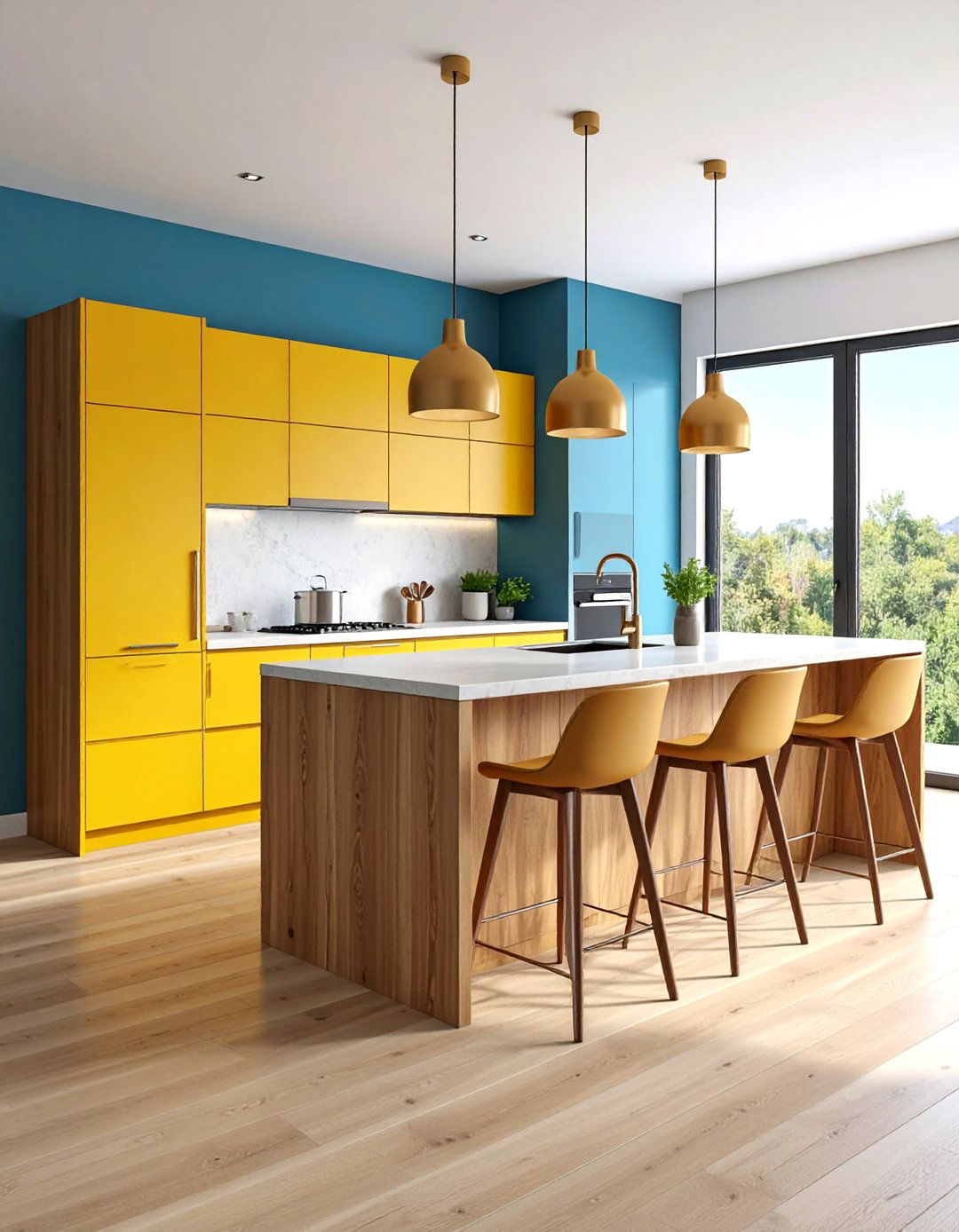
The multipurpose kitchen bar island represents the ultimate fusion of functionality and style in modern home design. This comprehensive approach integrates cooking surfaces, storage solutions, and casual dining into one cohesive centerpiece. The design typically features a built-in sink on one side for food preparation, while the opposite end extends into a comfortable breakfast bar with integrated electrical outlets for laptops or small appliances. Contemporary materials like quartz countertops paired with warm wood cabinetry create visual depth. Storage compartments include wine fridges, pull-out drawers for linens, and open shelving for displaying decorative items. Strategic pendant lighting illuminates both work and dining areas, while bar stools with backs provide comfortable seating for extended conversations and meals.
2. Peninsula Kitchen Bar Configuration
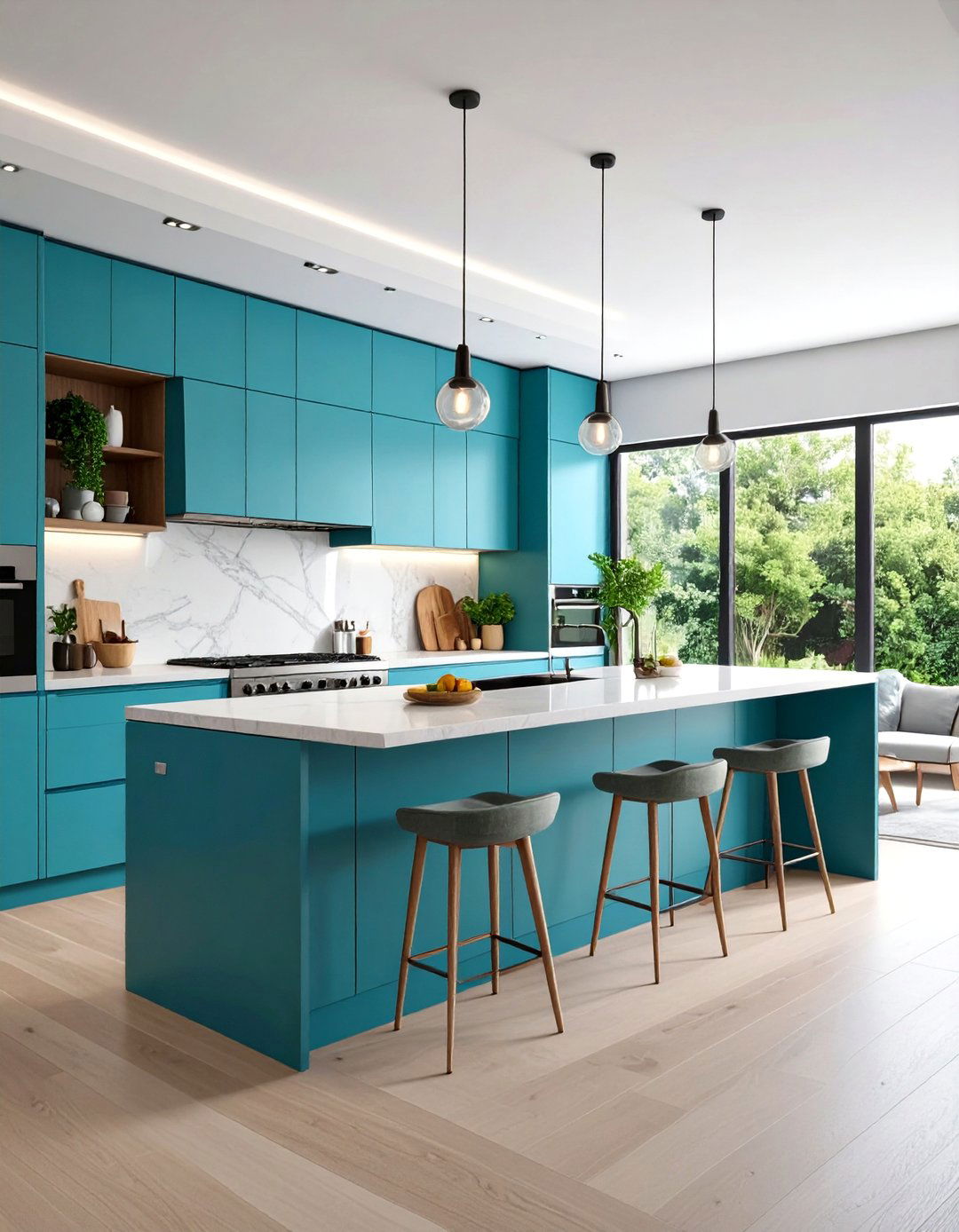
Peninsula kitchen bar designs maximize space efficiency while maintaining an open, connected feel between cooking and living areas. This layout extends from existing cabinetry into the room, creating a natural boundary without completely separating spaces. The design incorporates matching materials from the main kitchen, ensuring visual continuity throughout the area. Built-in storage beneath the bar includes cabinets for dinnerware and drawers for table linens, while the extended countertop provides ample space for food service and casual dining. The peninsula configuration works particularly well in smaller kitchens where a full island isn't feasible. Modern interpretations feature sleek finishes, integrated lighting systems, and streamlined hardware that complement contemporary design aesthetics while maintaining practical functionality.
3. Curved Kitchen Bar Layout
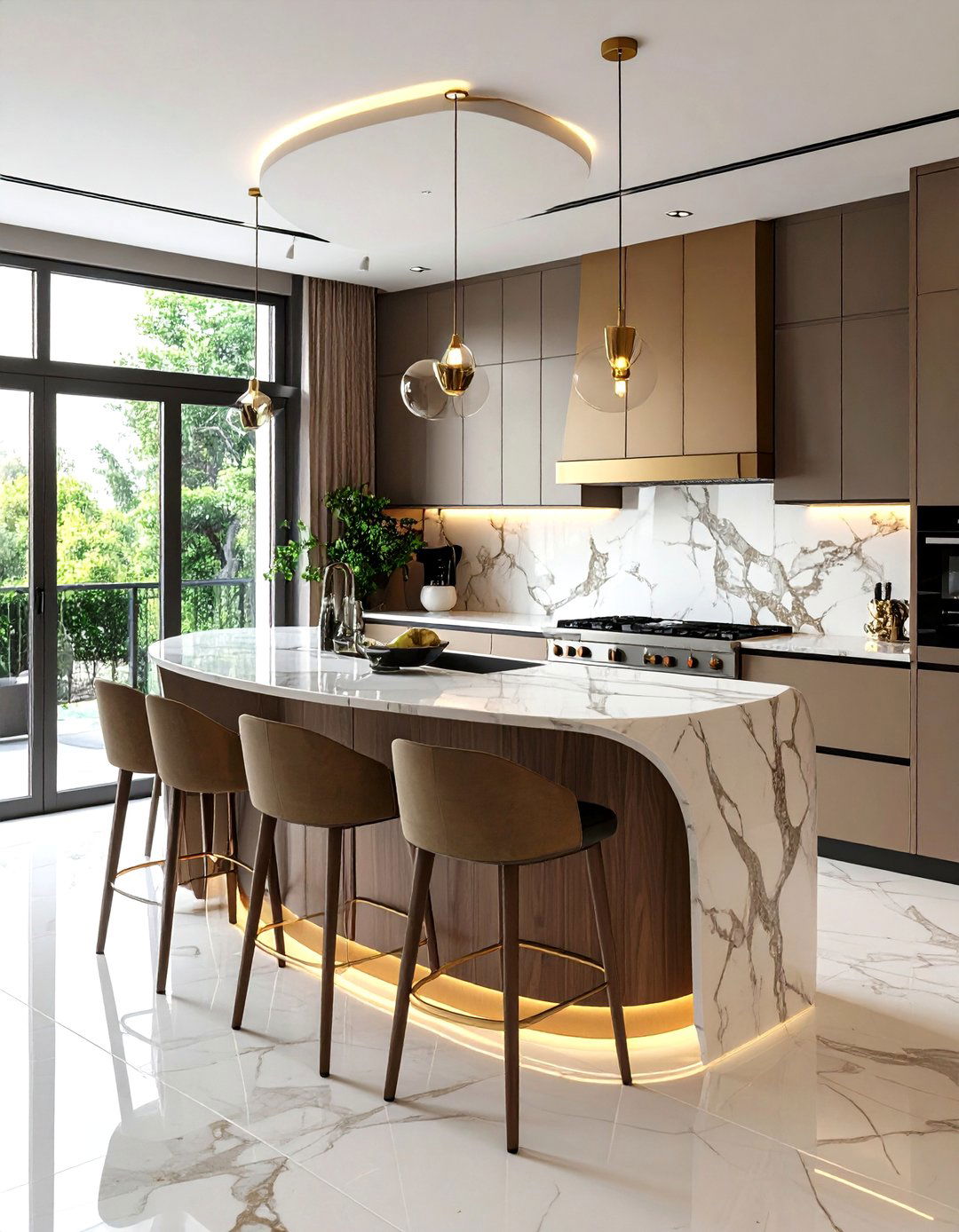
Curved kitchen bar layouts introduce organic flow and sophisticated elegance to contemporary kitchen designs. The gentle radius eliminates sharp corners, creating safer navigation while adding visual interest through sculptural form. This design approach works exceptionally well with waterfall edge countertops in materials like marble or engineered quartz, where the curved edge showcases the stone's natural veining patterns. The seating arrangement follows the curve naturally, encouraging conversation and creating an intimate dining experience. Supporting elements include curved base cabinets with soft-close hardware, integrated LED strip lighting that follows the counter's arc, and carefully selected bar stools that complement the flowing lines. The overall effect combines comfort with contemporary sophistication.
4. Modern Coffee Kitchen Bar Station

The modern coffee kitchen bar station transforms morning routines into luxurious experiences through dedicated beverage preparation areas. This specialized design features built-in espresso machines, coffee makers, and grinder storage within custom cabinetry finished in warm wood tones or sleek lacquered surfaces. Open shelving displays coffee cups and accessories, while closed storage conceals supplies and small appliances. The counter area includes space for milk frothers, sugar stations, and coffee bean canisters arranged for optimal workflow. Contemporary touches include under-cabinet lighting that illuminates the workspace, marble or quartz surfaces that resist heat and stains, and brass or matte black hardware that adds metallic accents. The station often incorporates small sinks for easy cleanup and water access.
5. Wet Kitchen Bar Integration
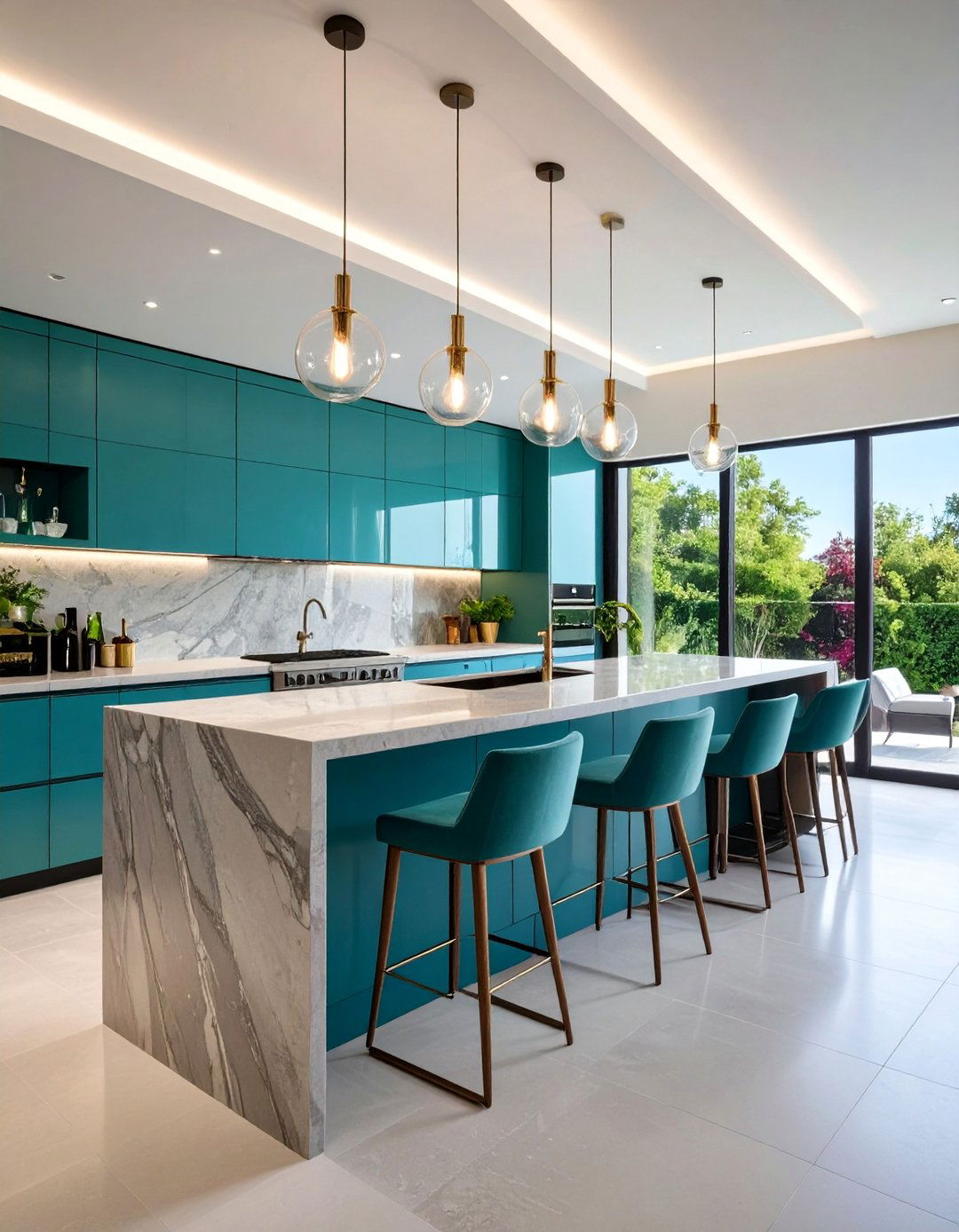
Wet kitchen bar integration brings sophisticated entertaining capabilities directly into the cooking space through dedicated beverage preparation zones. This design includes a small sink specifically for cocktail mixing and glassware cleaning, eliminating trips to the main kitchen sink during parties. The area features wine refrigeration units, ice makers, and glass storage within custom cabinetry that matches the kitchen's main design theme. Natural stone countertops provide durability and elegance, while mirrored or metallic backsplashes add glamour and reflect light throughout the space. The wet bar typically includes specialized storage for liquor bottles, cocktail shakers, and bar tools. Modern interpretations feature sleek faucets, under-counter lighting, and premium finishes that create a professional bar atmosphere within the home kitchen environment.
6. Industrial Kitchen Bar Style
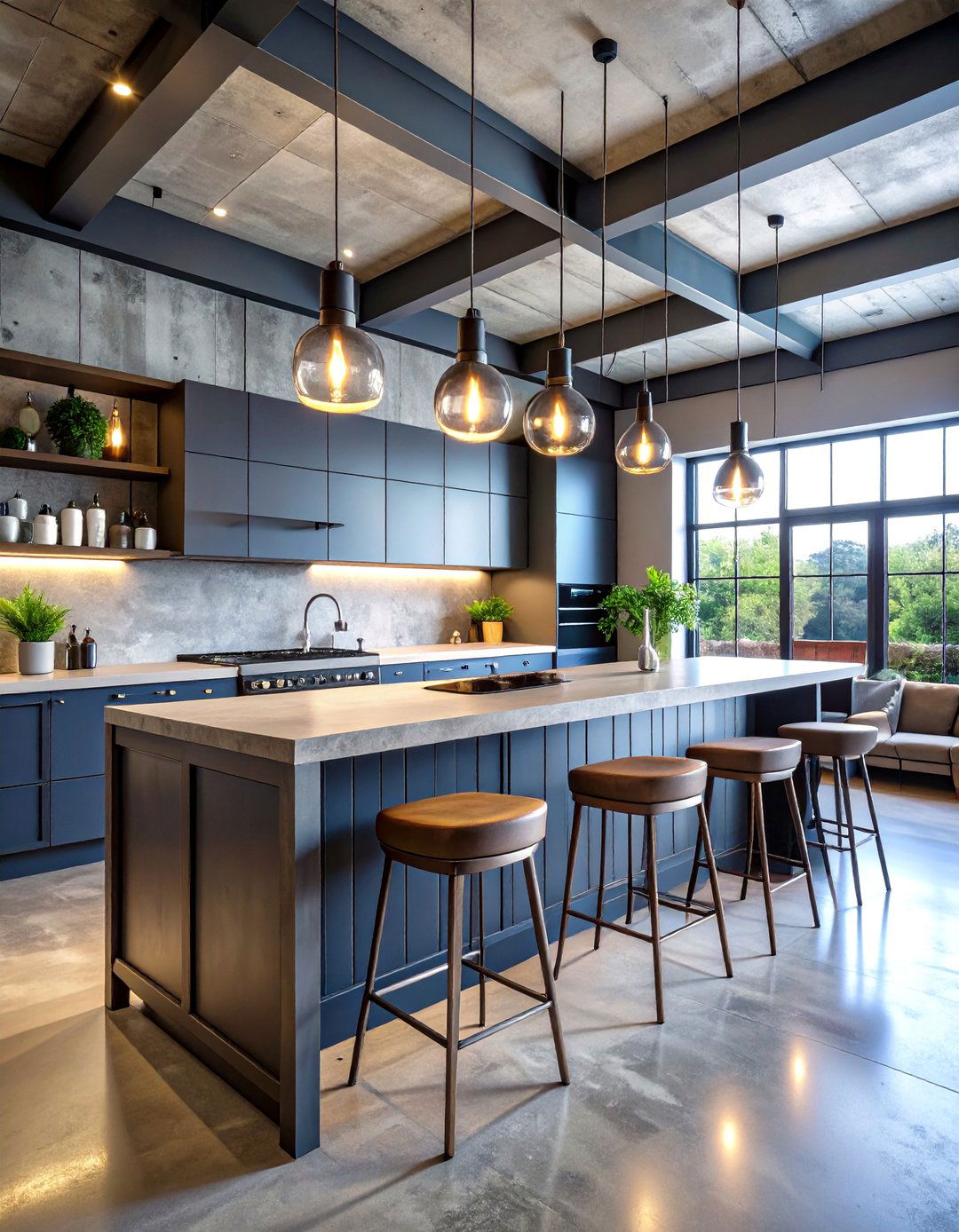
Industrial kitchen bar style embraces raw materials and utilitarian aesthetics to create bold, contemporary dining spaces. This design features exposed metal supports, concrete or butcher block countertops, and dark steel cabinetry with minimal hardware for an authentic industrial feel. The overall palette combines charcoal, black, and warm metal tones with strategic lighting from Edison bulb fixtures or track systems. Bar stools typically feature metal frames with leather or wood seats that complement the rugged aesthetic. Storage solutions include open shelving made from reclaimed wood and metal brackets, while the bar structure itself might incorporate pipes or structural steel elements. The industrial approach works particularly well in loft-style homes or modern spaces where the contrast between rough and refined materials creates visual interest.
7. Mid-Century Modern Kitchen Bar Design
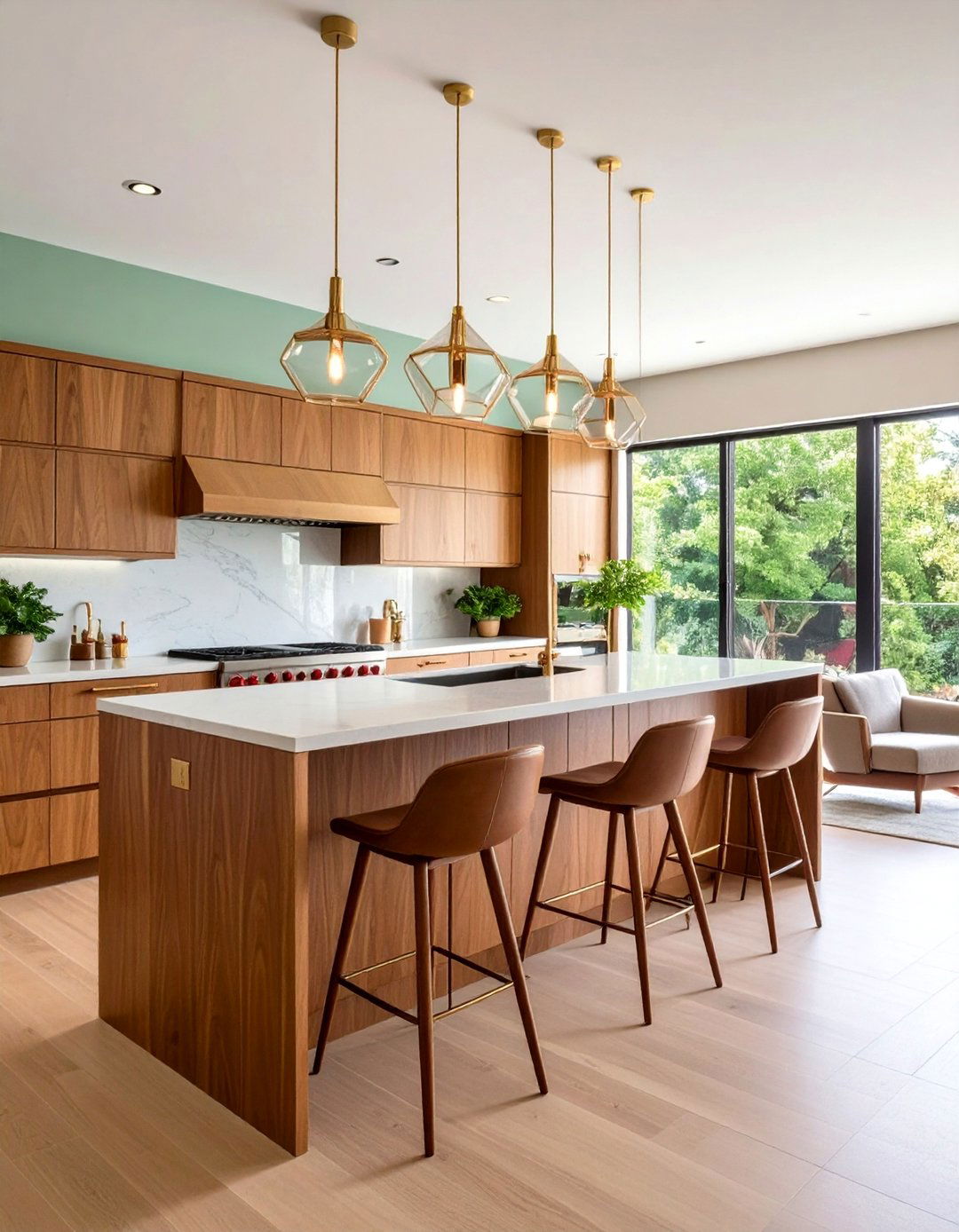
Mid-century modern kitchen bar design celebrates clean lines, warm wood tones, and geometric patterns that defined the era's sophisticated aesthetic. This approach features sleek horizontal wood grain cabinetry in walnut or teak finishes, paired with stone or quartz countertops in neutral colors. The bar structure emphasizes simplicity with tapered legs, angled supports, or floating counter designs that appear to defy gravity. Seating includes iconic bar stools with curved backs and upholstered seats in rich fabrics or leather. Accent lighting features brass or copper pendant fixtures with geometric shapes, while cabinet hardware maintains the period's preference for horizontal handles in matching metallic finishes. The color palette incorporates warm earth tones with occasional pops of vintage-inspired colors like sage green or burnt orange.
8. Farmhouse Kitchen Bar Design
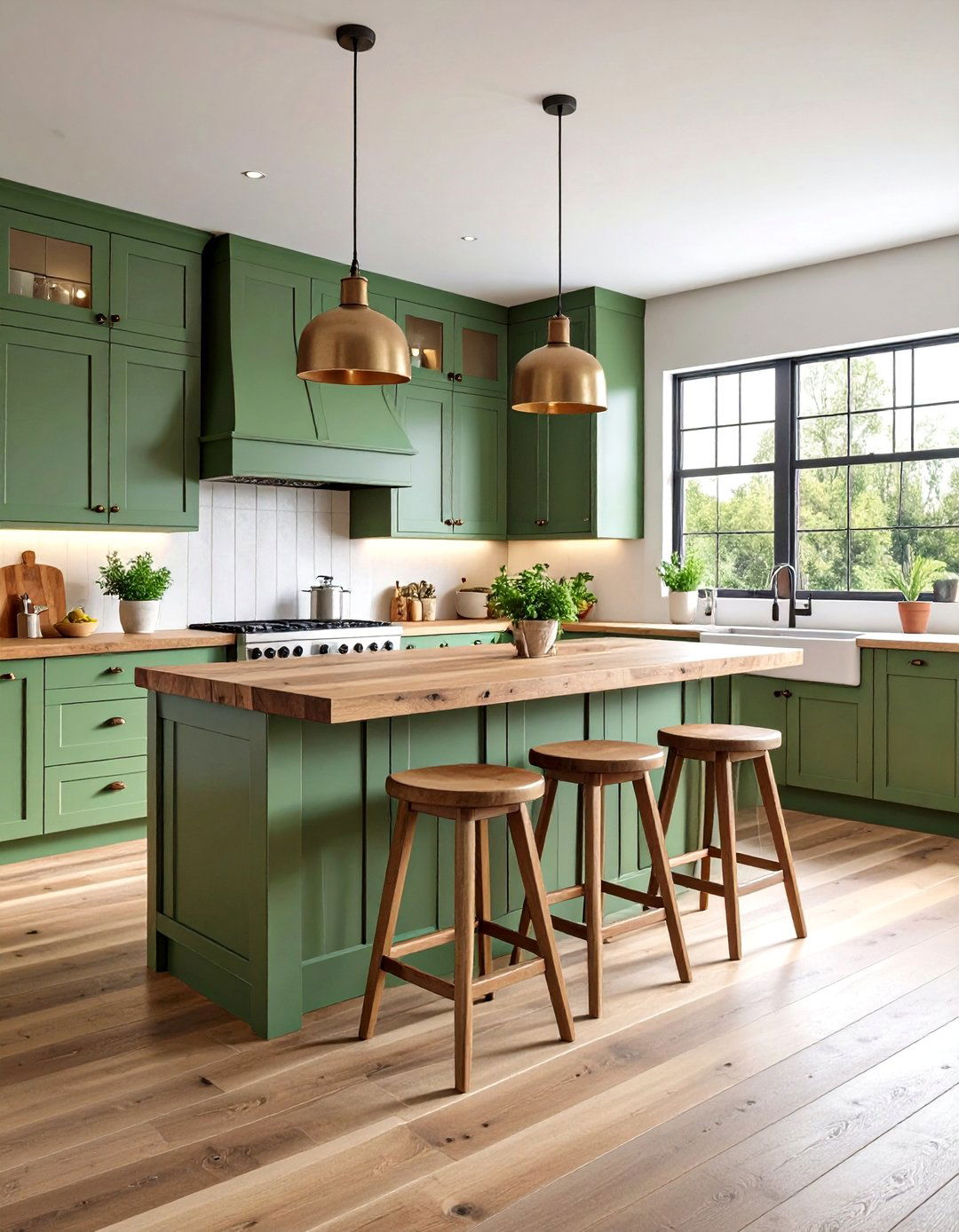
Farmhouse kitchen bar design combines rustic charm with practical functionality through natural materials and traditional craftsmanship details. This approach features reclaimed wood countertops with visible grain patterns, painted base cabinets in sage green or cream colors, and beadboard paneling that adds texture and visual interest. The overall design emphasizes comfort and warmth through generous proportions and welcoming materials. Storage includes open shelving for displaying vintage dishware and mason jars, while closed cabinets feature shaker-style doors with classic hardware in oil-rubbed bronze or black iron finishes. Seating typically includes wooden stools with ladder backs or upholstered seats in natural fabrics. The farmhouse aesthetic incorporates vintage-inspired lighting fixtures, apron-front sinks, and decorative elements like galvanized metal accents or antique scale accessories.
9. Coastal Kitchen Bar Theme
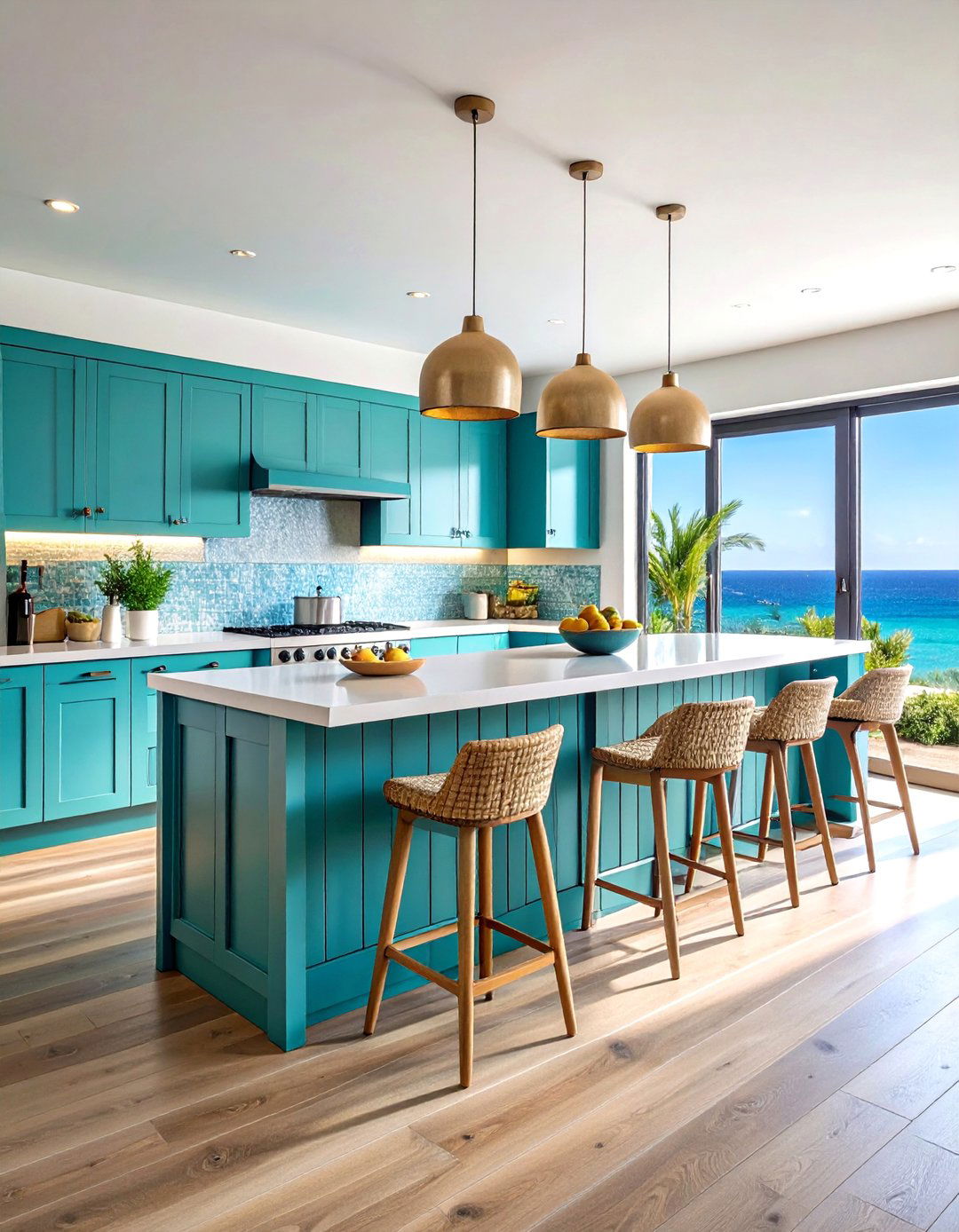
Coastal kitchen bar themes evoke seaside serenity through light colors, natural textures, and oceanic inspirations that create relaxing dining environments. This design features weathered wood finishes, sea glass-inspired tile backsplashes, and countertops in whites or soft blues that mirror coastal landscapes. The overall palette emphasizes calming neutrals with accent colors drawn from ocean hues like aqua, seafoam, or sandy beige. Natural materials include rope details, woven basket storage, and driftwood-inspired design elements that reinforce the seaside connection. Lighting fixtures often feature lantern-style pendants or fixtures with nautical influences, while bar stools might include woven seats or weathered finishes. The coastal theme incorporates subtle patterns like subtle stripes or coral motifs, creating a vacation-like atmosphere that encourages relaxation and casual gathering.
10. Minimalist Kitchen Bar Concept

Minimalist kitchen bar concepts prioritize clean lines, uncluttered surfaces, and sophisticated simplicity through careful material selection and restrained design choices. This approach features sleek countertops in white quartz or concrete, handle-less cabinetry with push-to-open mechanisms, and integrated storage that maintains visual cleanliness. The color palette remains neutral with whites, grays, and blacks creating sophisticated contrast without visual noise. Storage solutions hide appliances and accessories behind seamless cabinet doors, while the bar structure itself appears to float or emerges seamlessly from surrounding elements. Lighting includes recessed fixtures or simple pendant designs that provide illumination without decorative distraction. Bar seating features clean-lined stools in matching colors, often with minimal upholstery or sleek metal frames that complement the overall aesthetic of purposeful simplicity.
11. Two-Tone Kitchen Bar Design

Two-tone kitchen bar design creates visual depth and contemporary sophistication through strategic color contrasts that define different functional zones. This approach typically features darker base cabinets in navy blue or charcoal paired with lighter upper elements in white or cream, creating balanced proportions and visual interest. The bar area might showcase the contrast most dramatically, with the lower cabinetry in the darker tone and the countertop overhang supported by elements in the lighter shade. Materials play crucial roles, with different finishes like matte and gloss or wood and painted surfaces enhancing the tonal contrast. Hardware selection maintains consistency while allowing each color zone to shine, often featuring brass or black finishes that work with both tones. The overall effect creates dynamic visual layers while maintaining cohesive design integrity.
12. Breakfast Kitchen Bar with Built-in Storage
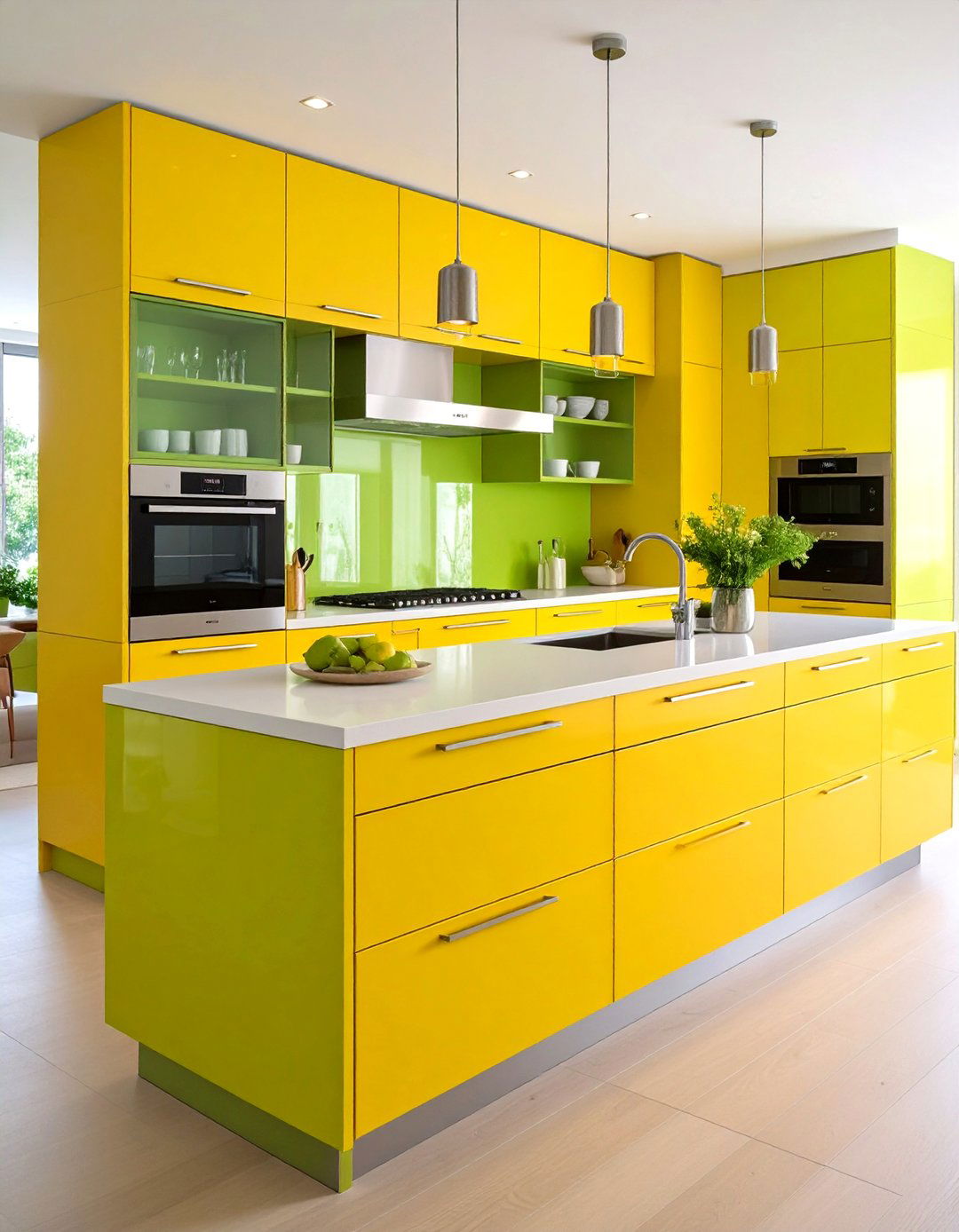
Breakfast kitchen bar with built-in storage maximizes functionality through clever organizational solutions that keep essentials accessible while maintaining clean aesthetics. This design incorporates multiple storage types including deep drawers for large items, narrow pull-outs for spices and condiments, and specialized compartments for small appliances. The bar structure includes built-in magazine racks, charging stations for electronic devices, and even small refrigerator drawers for beverages and snacks. Upper storage might feature glass-front cabinets displaying dishware or open shelving for frequently used items. The design emphasizes accessibility with soft-close hardware, full-extension drawer slides, and storage solutions positioned at optimal heights for daily use. Interior organization includes custom dividers, lazy Susans, and pull-out bins that keep everything in its designated place while supporting efficient morning routines.
13. Floating Kitchen Bar Counter
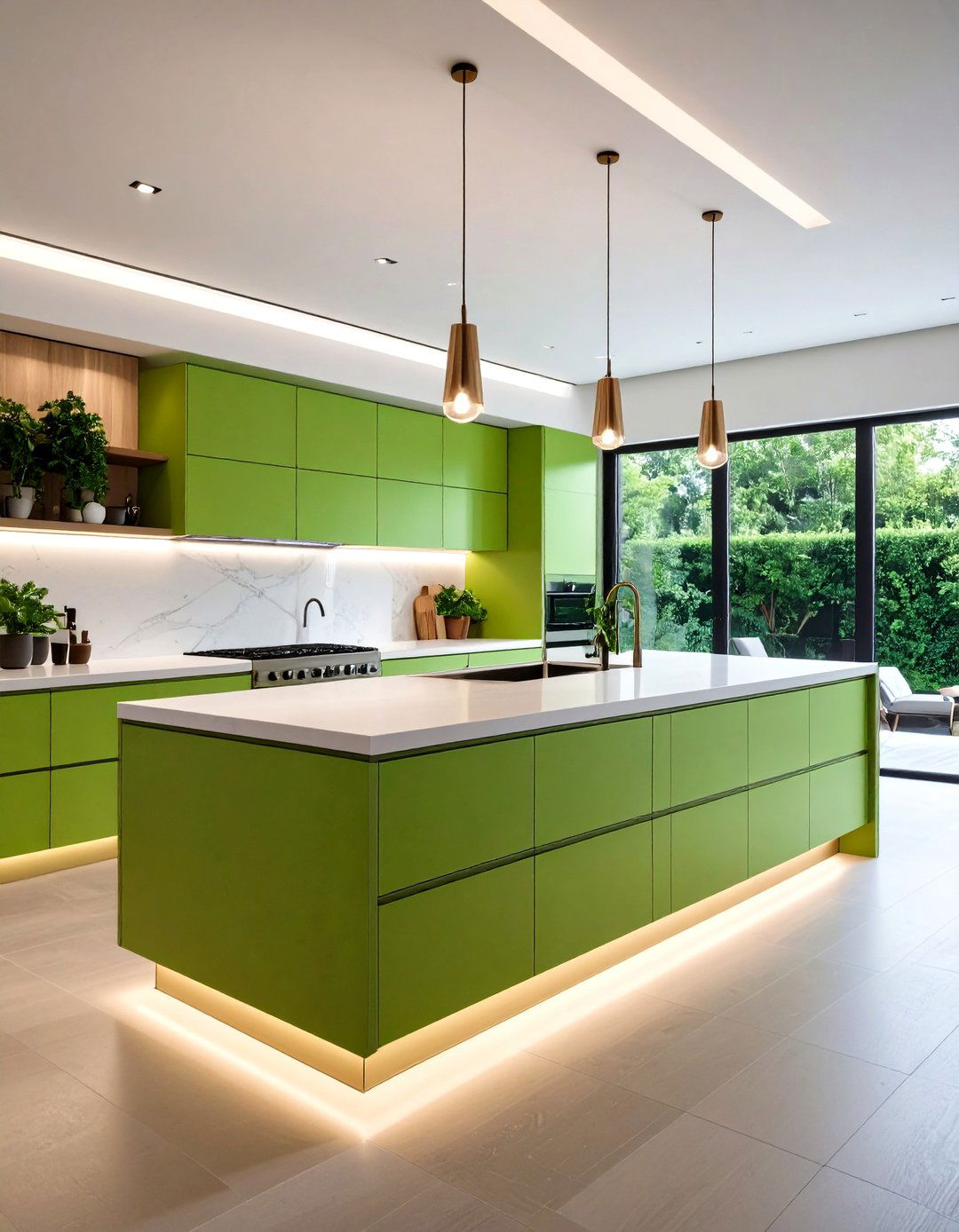
Floating kitchen bar counters create dramatic visual impact through seemingly weightless design that emphasizes space and light. This approach features countertops that appear to hover without visible support, achieved through hidden structural elements or cantilever engineering that maintains safety while creating architectural drama. The floating element often extends from wall-mounted cabinetry or emerges from kitchen islands with concealed support systems. Materials typically include lighter colors and sleek finishes that enhance the floating effect, such as white quartz, light wood, or glass. Lighting plays a crucial role with LED strips underneath the counter creating the illusion of levitation while providing practical illumination. The surrounding design maintains minimal visual weight through clean lines and uncluttered surfaces that allow the floating element to serve as the focal point.
14. Smart Technology Kitchen Bar
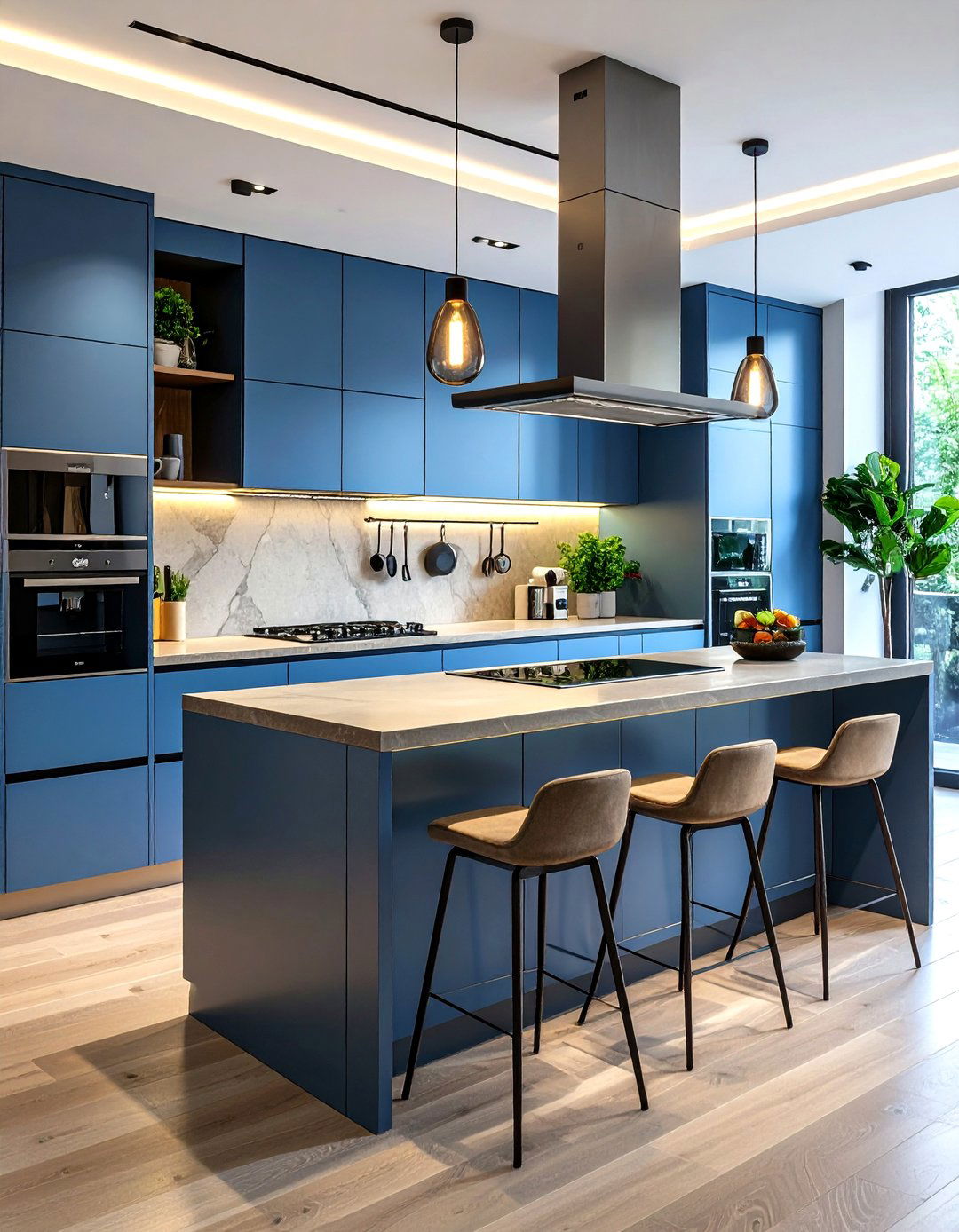
Smart technology kitchen bar integration transforms traditional dining spaces into connected environments that respond to modern lifestyle needs. This design incorporates wireless charging surfaces built into the countertop, USB outlets positioned for device access, and smart lighting systems controlled through voice commands or mobile applications. The bar area includes smart appliances like app-controlled coffee makers, refrigerated drawers with temperature monitoring, and even built-in tablets for recipe access or entertainment streaming. Storage solutions feature motorized mechanisms for cabinet doors and drawers, while the overall design maintains sleek aesthetics that hide technological complexity. Voice-controlled assistants integrate seamlessly into the design, often concealed within cabinetry or built into custom housing that matches surrounding finishes. The smart features enhance daily convenience while maintaining sophisticated design aesthetics.
15. Marble Waterfall Kitchen Bar

Marble waterfall kitchen bar design creates luxurious focal points through continuous stone surfaces that flow dramatically from horizontal to vertical orientations. This approach features book-matched marble slabs where the stone's natural veining patterns mirror across the vertical edge, creating stunning visual continuity and highlighting the material's natural beauty. The waterfall edge extends to the floor, creating a sculptural element that serves as both functional surface and artistic statement. Seating arrangements position bar stools to showcase the marble's patterns while maintaining comfortable proportions for dining. The surrounding design elements remain understated to allow the marble's natural drama to dominate the space. Lighting specifically targets the stone surface to enhance its translucent qualities and highlight the veining patterns, while protective treatments ensure durability for daily use.
16. Open Shelving Kitchen Bar
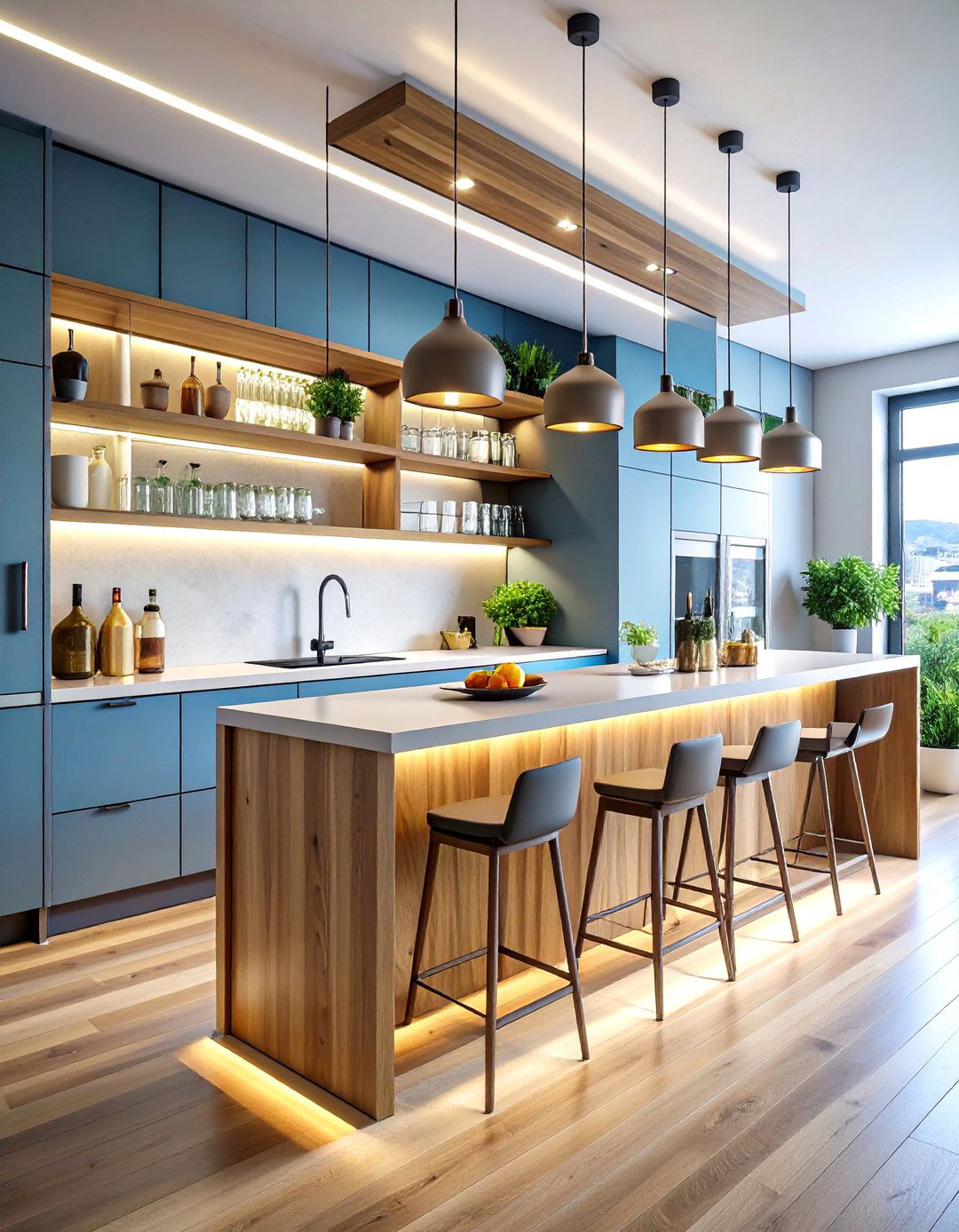
Open shelving kitchen bar design embraces transparency and accessibility through display-focused storage that combines functionality with decorative potential. This approach features floating shelves or bracket-supported systems that showcase dishes, glassware, and decorative objects while maintaining easy access for daily use. The design typically incorporates mixed materials like wood shelving with metal brackets or glass shelves with brass supports that add textural interest. Organization becomes crucial with careful attention to color coordination, height variation, and visual balance among displayed items. The bar structure includes both open and closed storage options, allowing for display of attractive items while concealing everyday necessities. Lighting often includes LED strips under shelves or strategic pendant fixtures that illuminate both work surfaces and displayed collections, creating warm ambiance while providing practical illumination.
17. Corner Kitchen Bar Nook
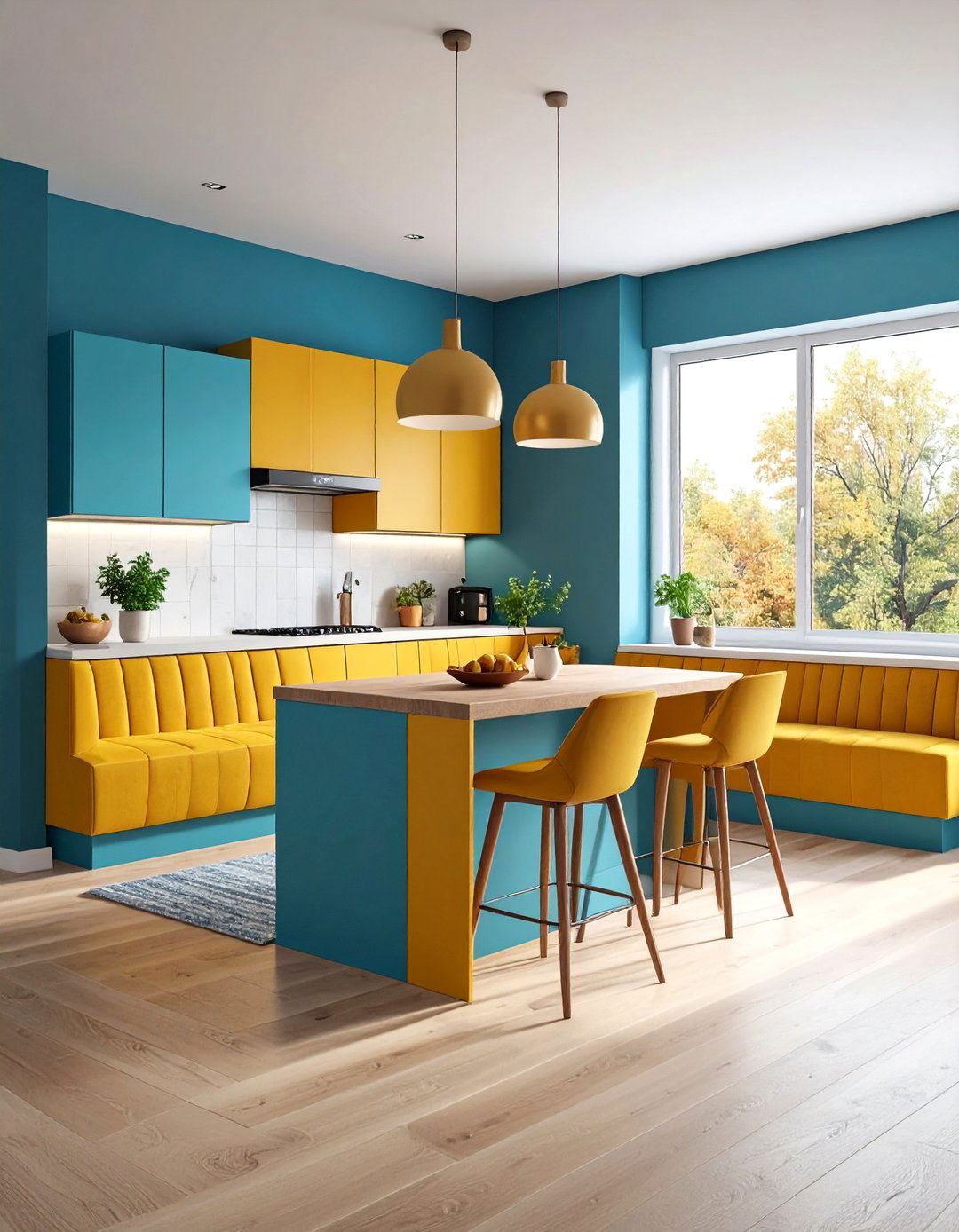
Corner kitchen bar nook design maximizes underutilized spaces through clever positioning that creates intimate dining areas within larger kitchen layouts. This approach transforms awkward corner areas into functional breakfast spots through custom-fitted seating, storage, and work surfaces designed to fit specific spatial constraints. The design often includes banquette seating with storage underneath, corner tables that maximize seating capacity, and overhead storage that takes advantage of vertical space. Natural light becomes crucial with window placement or skylights that prevent the corner from feeling enclosed or dark. Materials typically include light colors and reflective surfaces that enhance the sense of space while maintaining cozy proportions. The corner nook creates separation from the main cooking area while remaining connected to kitchen activities, perfect for quiet meals or homework sessions.
18. T-Shaped Kitchen Bar Island
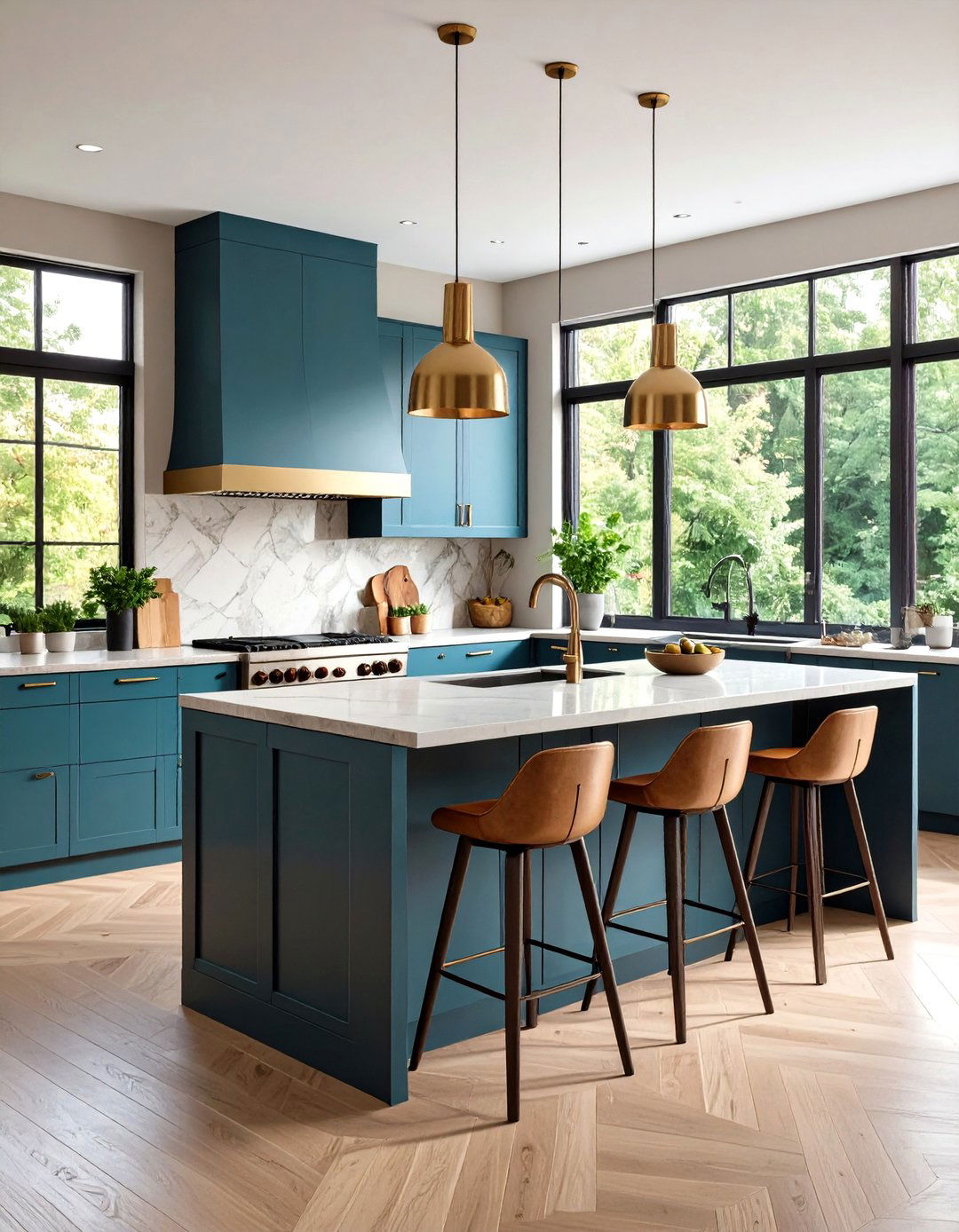
T-shaped kitchen bar island design creates distinct functional zones while maintaining open communication throughout the kitchen space. This configuration features perpendicular elements that separate food preparation areas from dining sections, allowing multiple people to use different zones simultaneously without interference. The main island body typically houses cooking appliances and storage, while the perpendicular bar extension provides seating and serving space. Materials often contrast between the working and dining areas, with more durable surfaces for cooking zones and comfortable materials for dining areas. The design creates natural traffic patterns that separate work flow from social activities while maintaining visual connection. Storage solutions take advantage of both island sections with specialized organization for cooking tools, dinnerware, and entertaining supplies positioned according to their intended use.
19. Banquette Kitchen Bar Seating

Banquette kitchen bar seating creates restaurant-style comfort through built-in upholstered seating that maximizes capacity while maintaining elegant aesthetics. This approach features custom-built bench seating with comfortable back support, often incorporating storage within the base structure for linens, games, or seasonal items. The upholstery selection balances durability with style, often featuring performance fabrics in colors that complement the overall kitchen design. Table proportions accommodate the fixed seating arrangement while allowing comfortable access and leg room. The design creates intimate dining experiences that encourage longer conversations and family gatherings. Lighting above the banquette area often includes pendant fixtures or recessed lighting that provides adequate illumination for dining and reading. The overall effect combines the comfort of restaurant-style seating with the personalization possible in residential design.
20. Glass-Front Kitchen Bar Cabinets
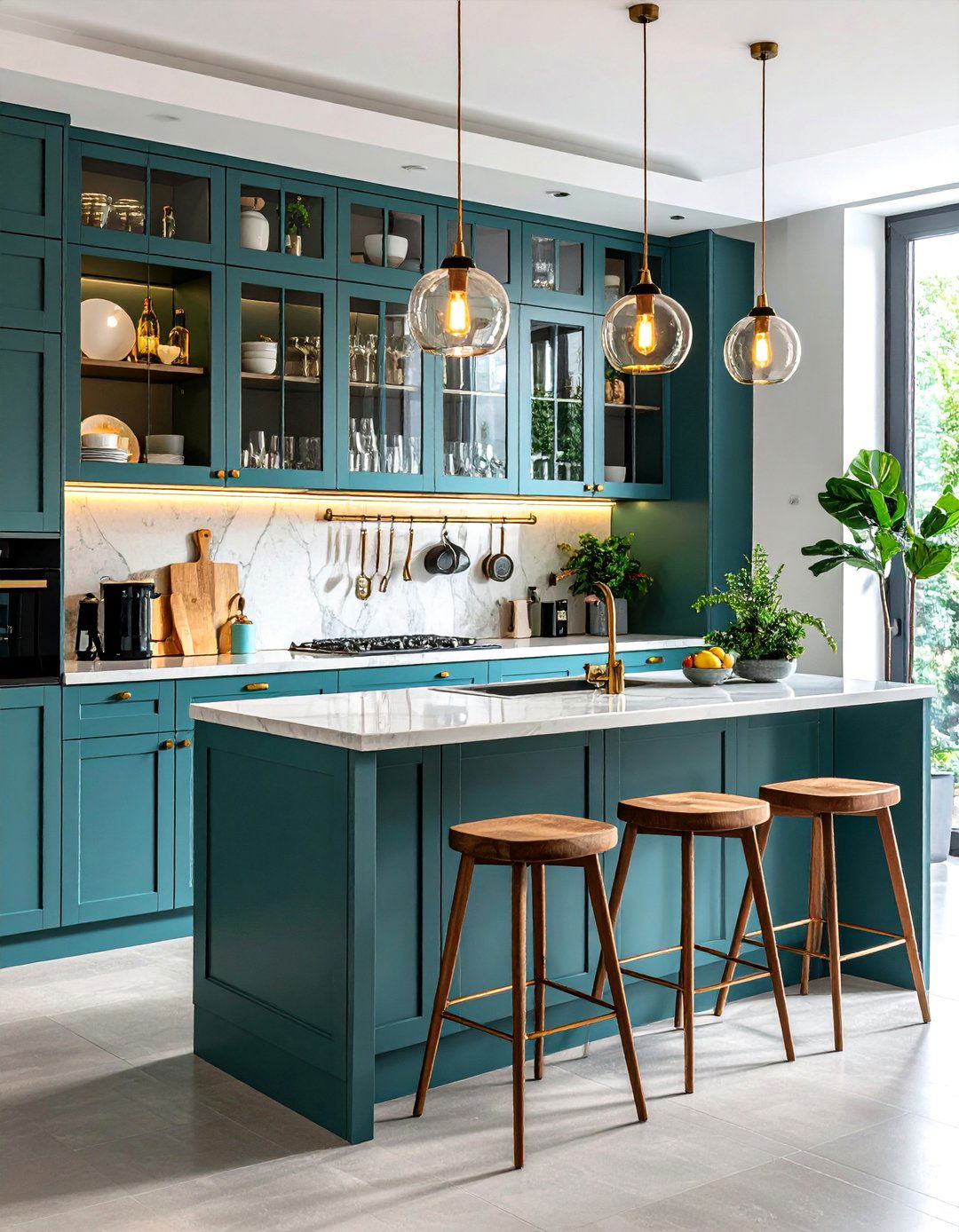
Glass-front kitchen bar cabinets create sophisticated display opportunities while maintaining organized storage through transparent doors that showcase beautiful dishware and glassware. This design approach requires careful attention to internal organization with consistent spacing, color coordination, and strategic lighting that illuminates the cabinet contents. The glass selection ranges from clear panels for maximum visibility to textured or frosted options that soften the view while maintaining the sense of openness. Internal shelving often features glass or light-colored materials that enhance the display effect, while LED strip lighting provides even illumination throughout the cabinet depth. The surrounding design elements typically remain understated to allow the cabinet contents to serve as decorative focal points. Hardware selection includes elegant handles or touch-latch mechanisms that maintain clean lines while providing easy access to stored items.
Conclusion:
These twenty kitchen bar ideas demonstrate how thoughtful design transforms functional spaces into inviting gathering places that enhance daily life. Each concept balances practical requirements with aesthetic preferences, creating environments that serve multiple purposes while reflecting personal style. From sleek modern interpretations to warm traditional approaches, successful kitchen bar design considers storage needs, traffic patterns, and social dynamics. The key lies in selecting elements that complement your existing space while introducing features that elevate both functionality and visual appeal, ultimately creating kitchen bars that become the natural heart of home life.


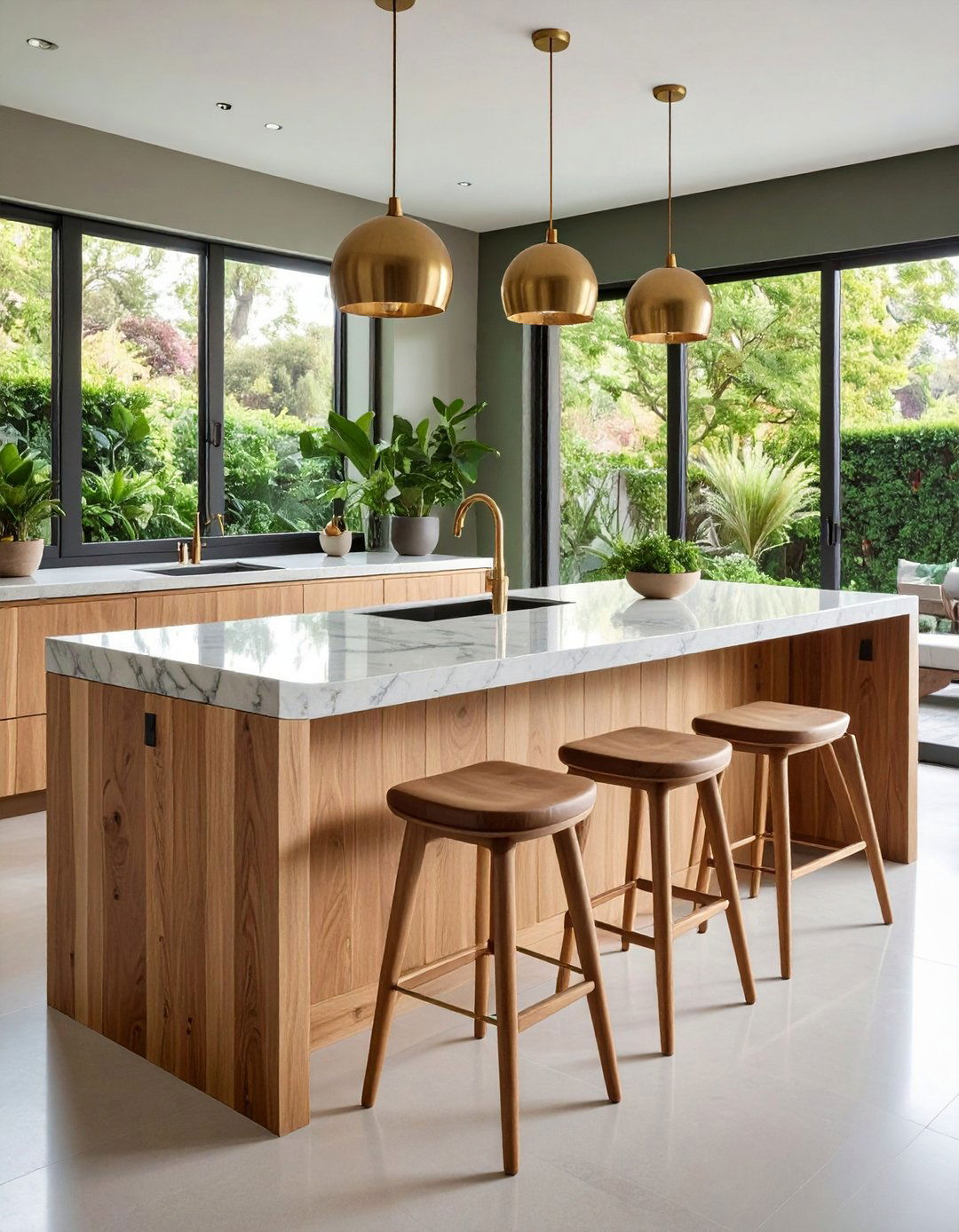
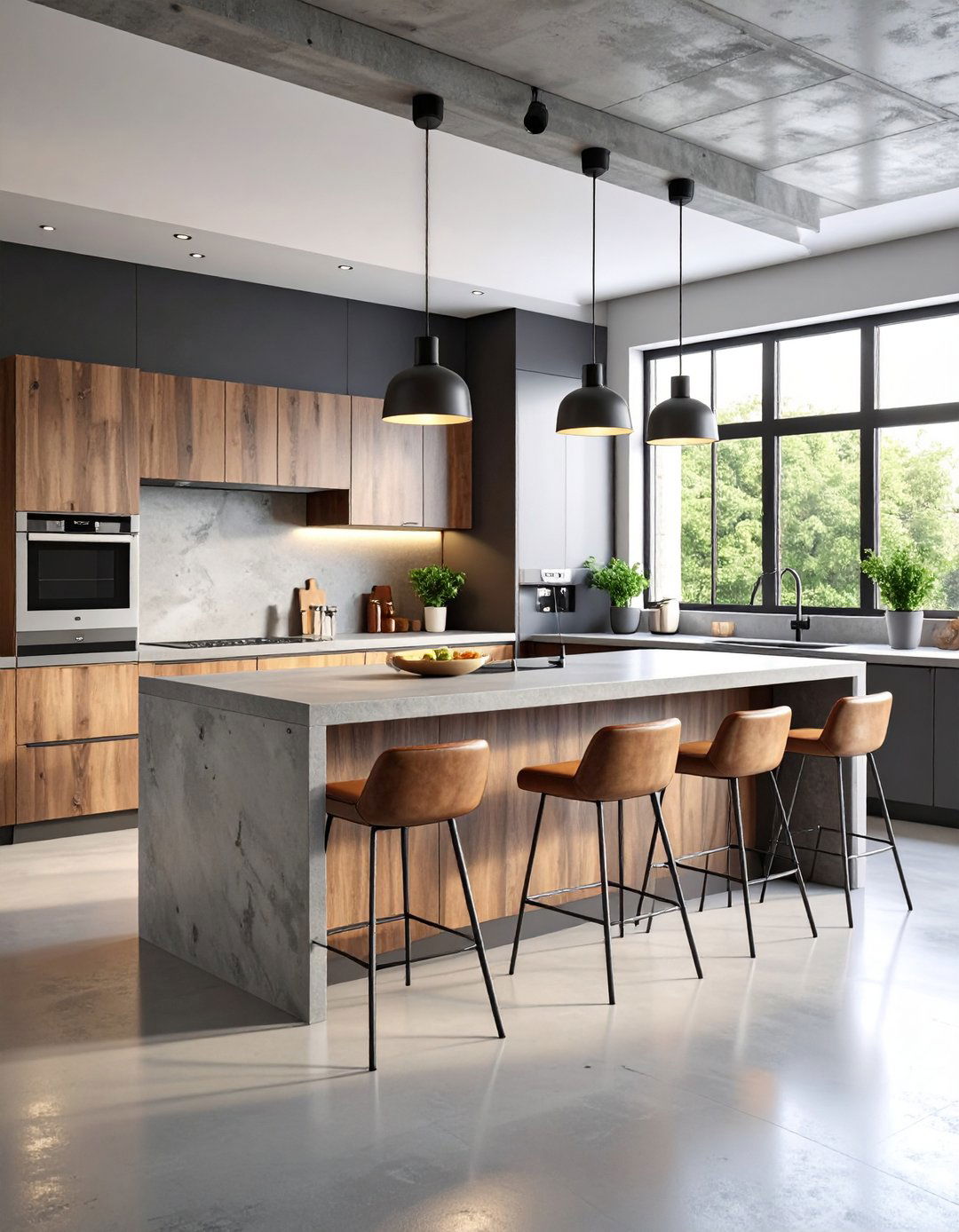
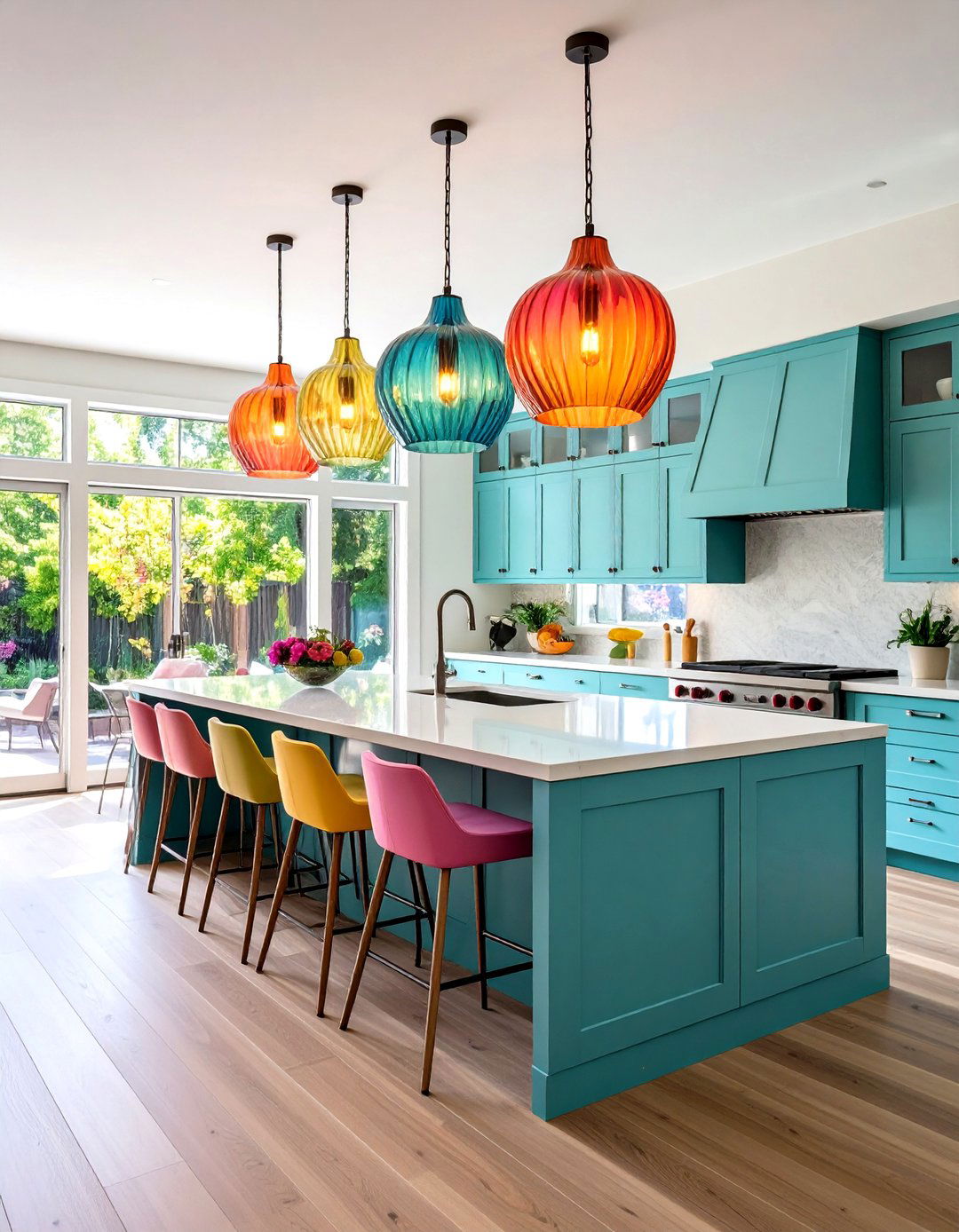
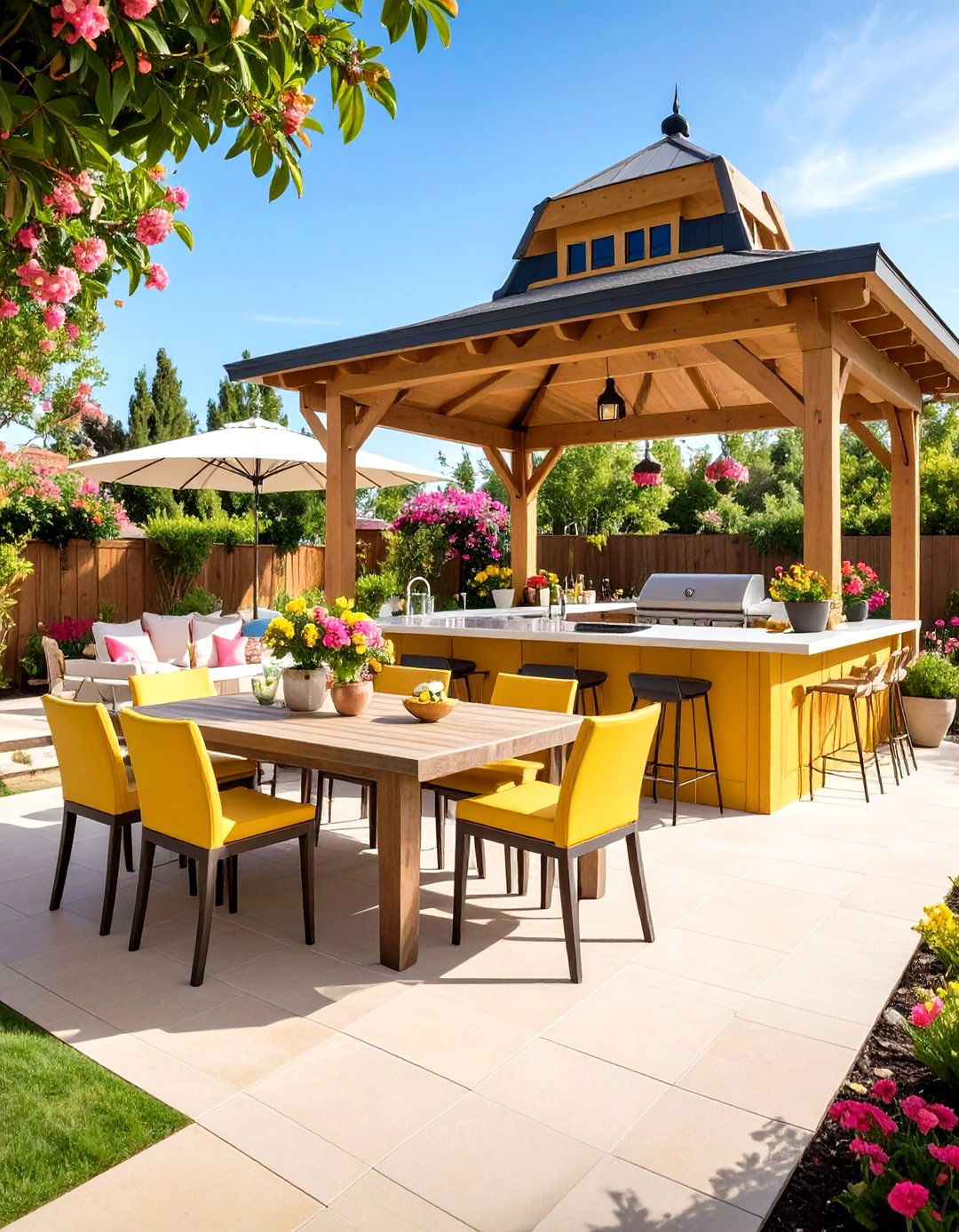
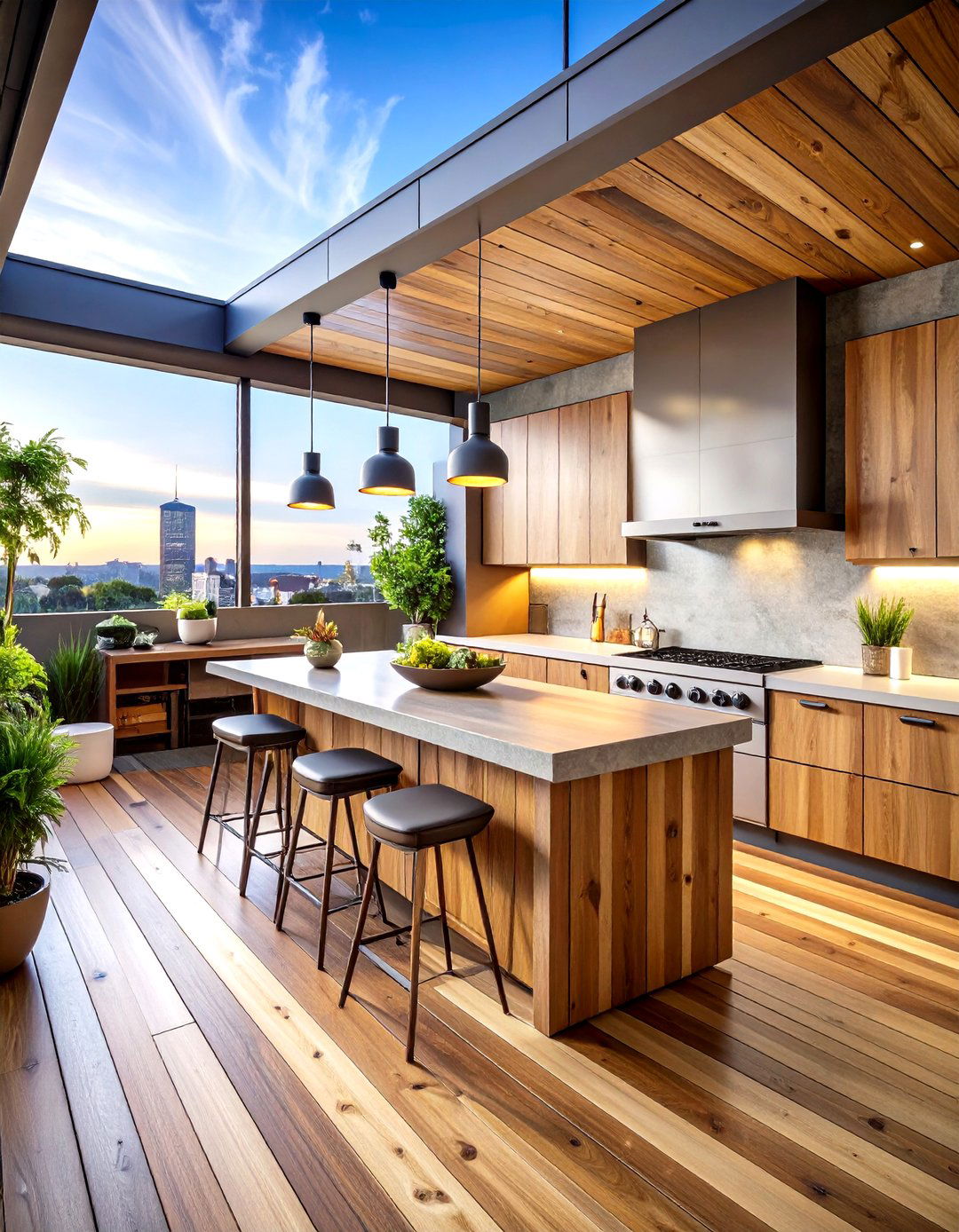
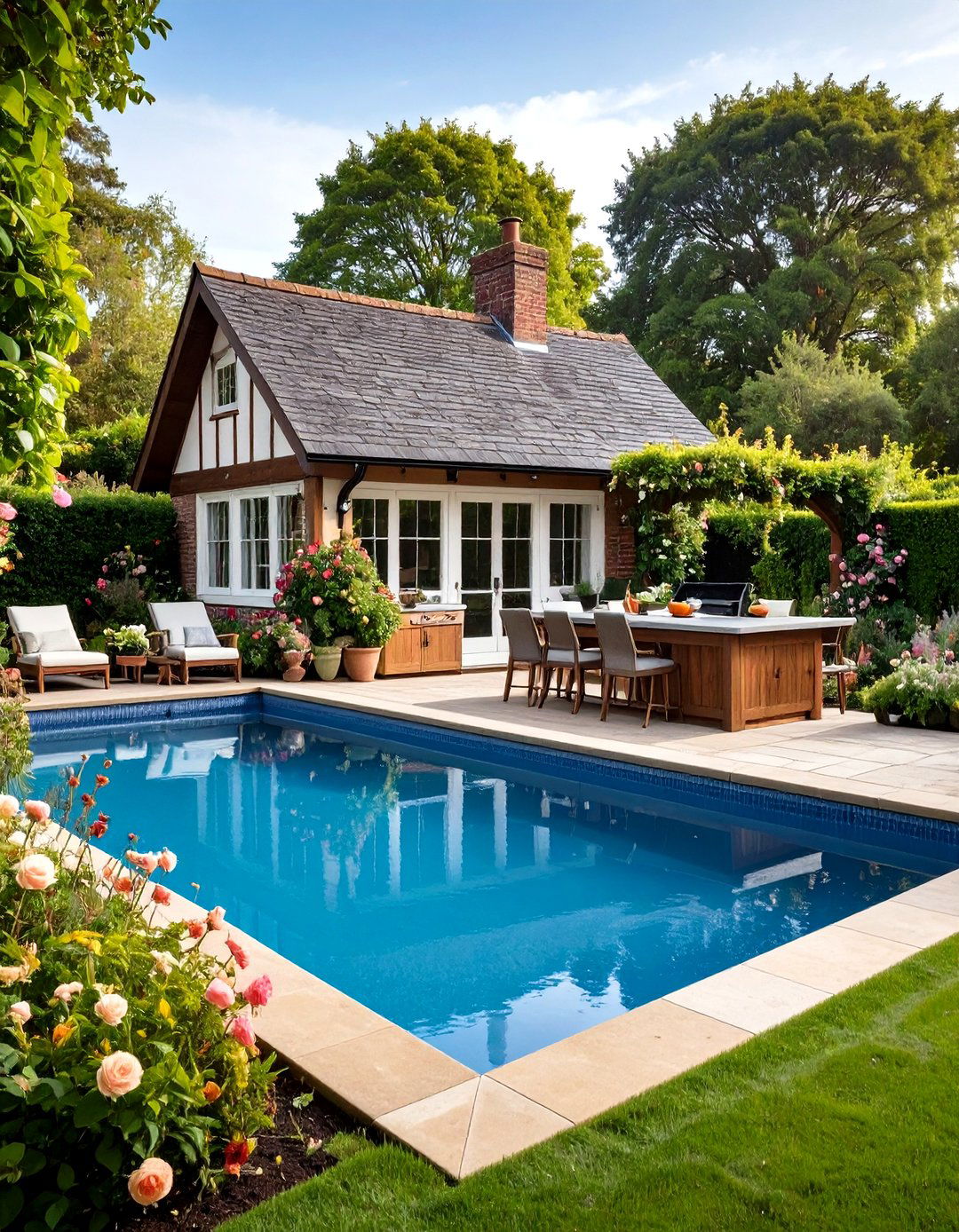
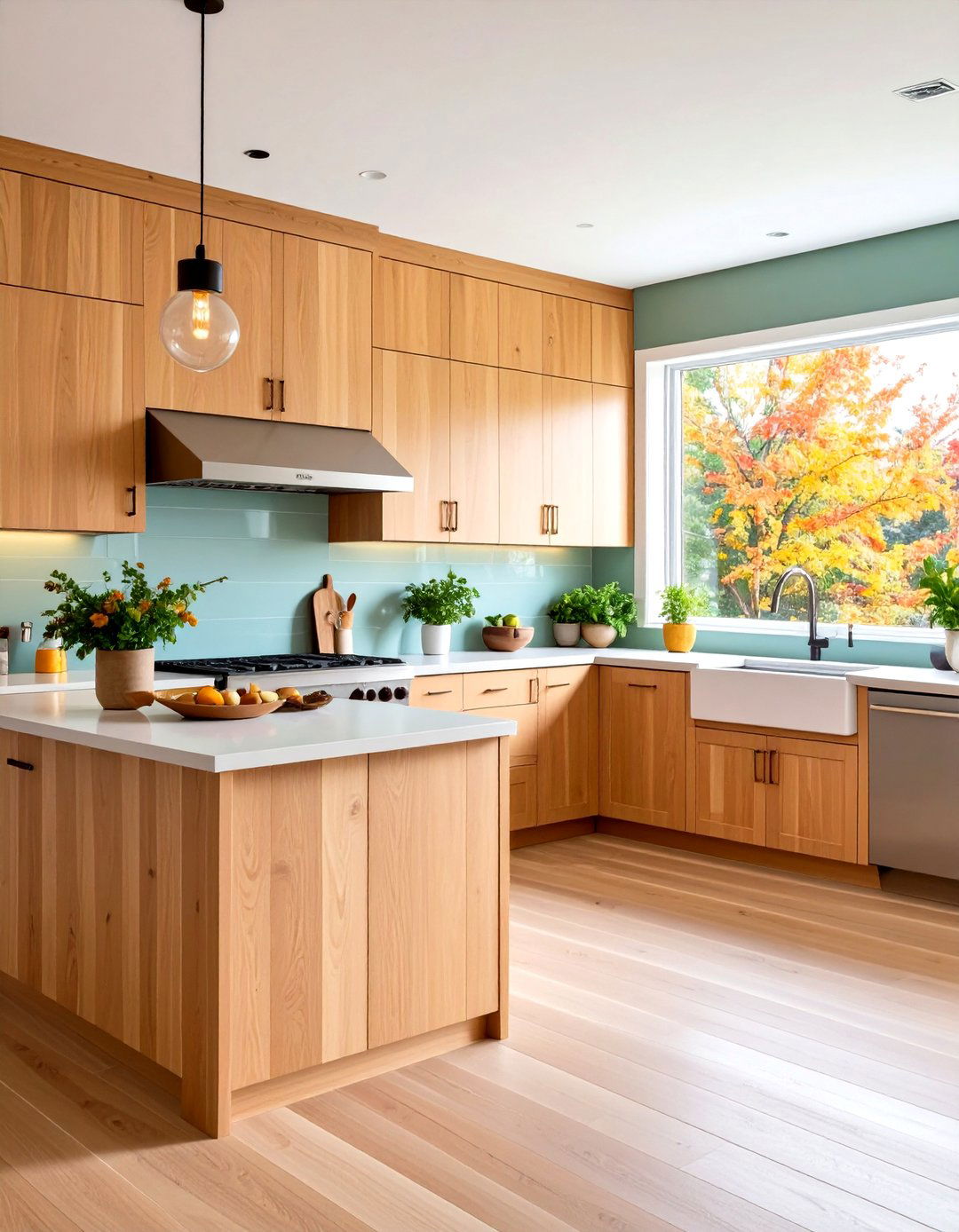
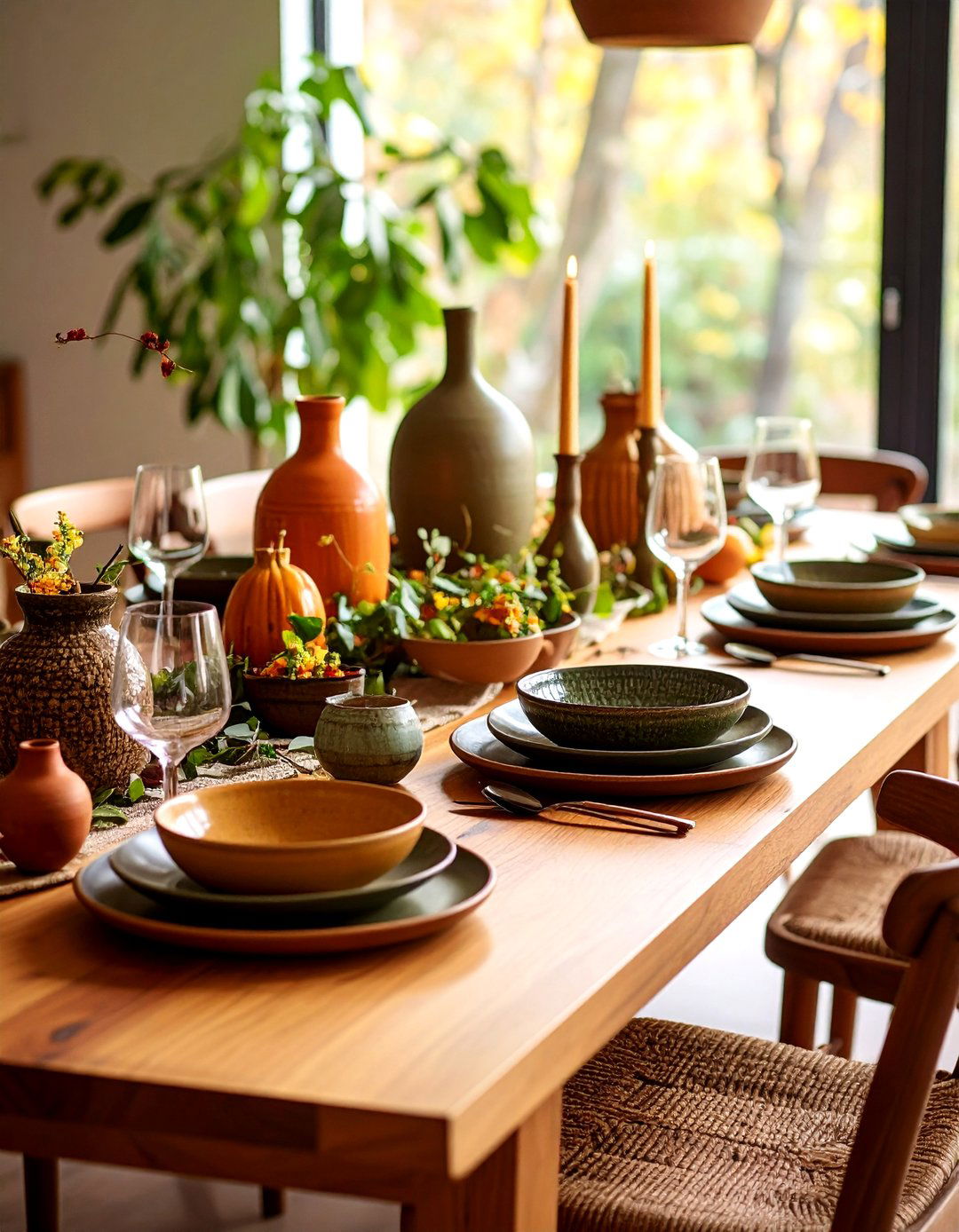
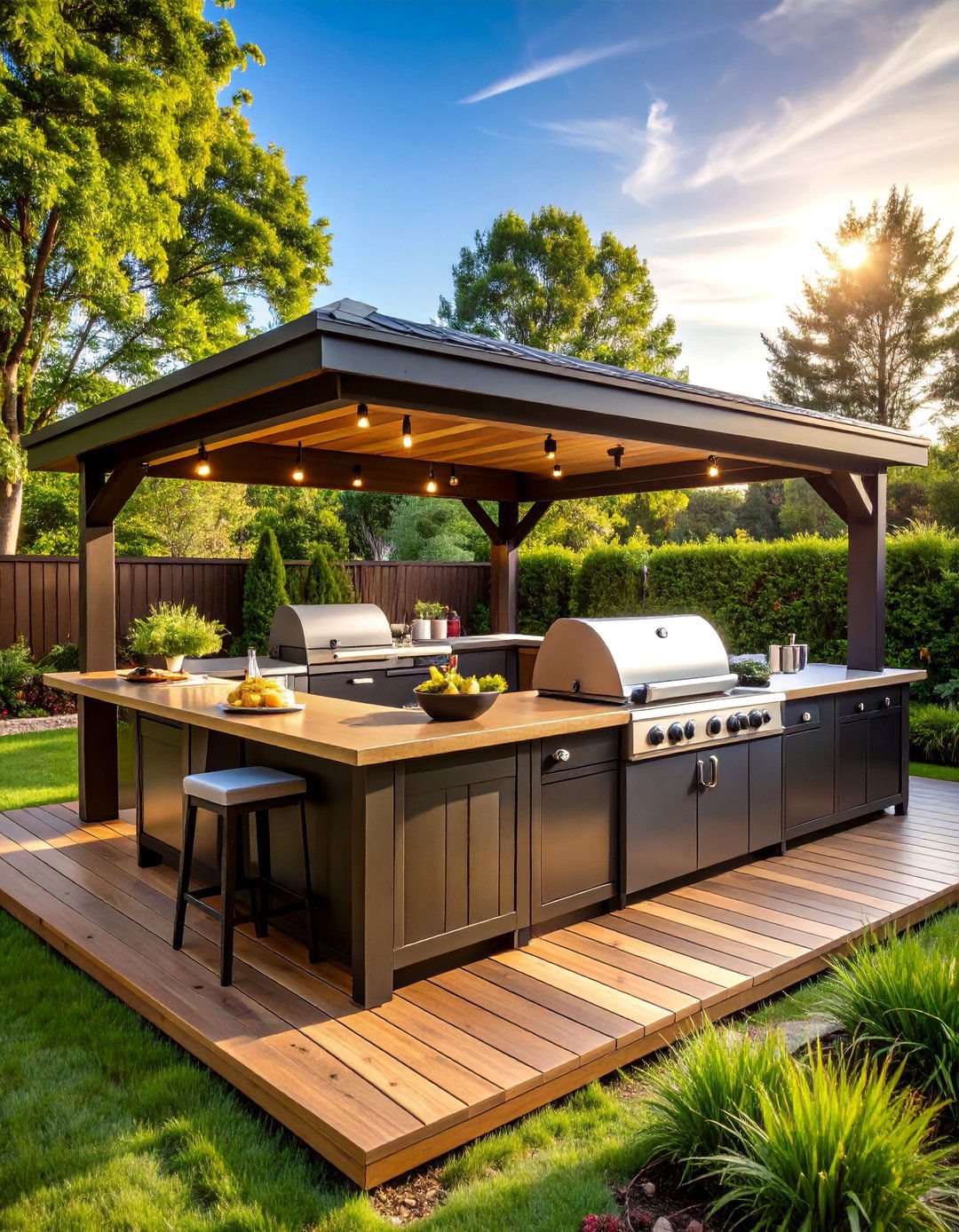

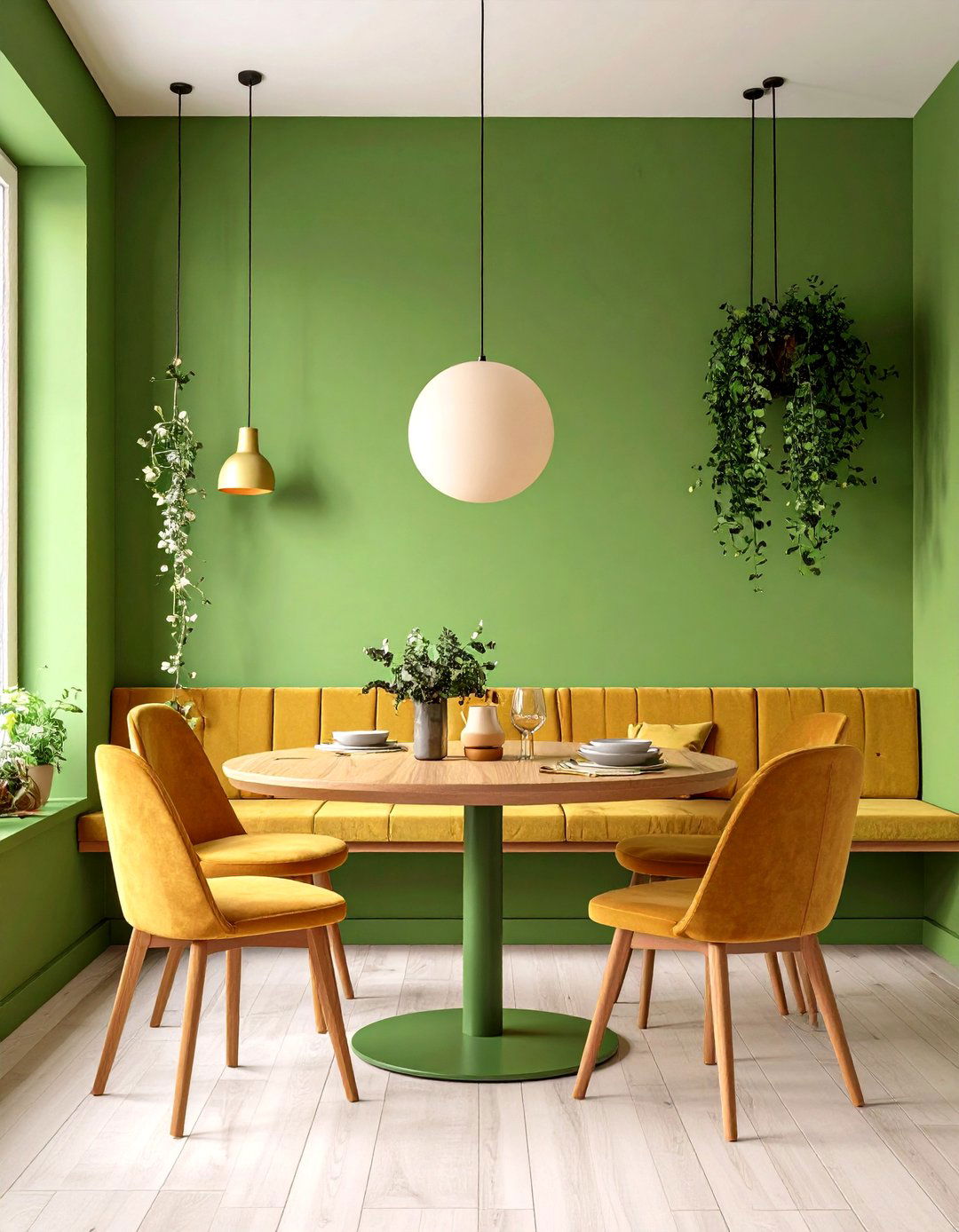

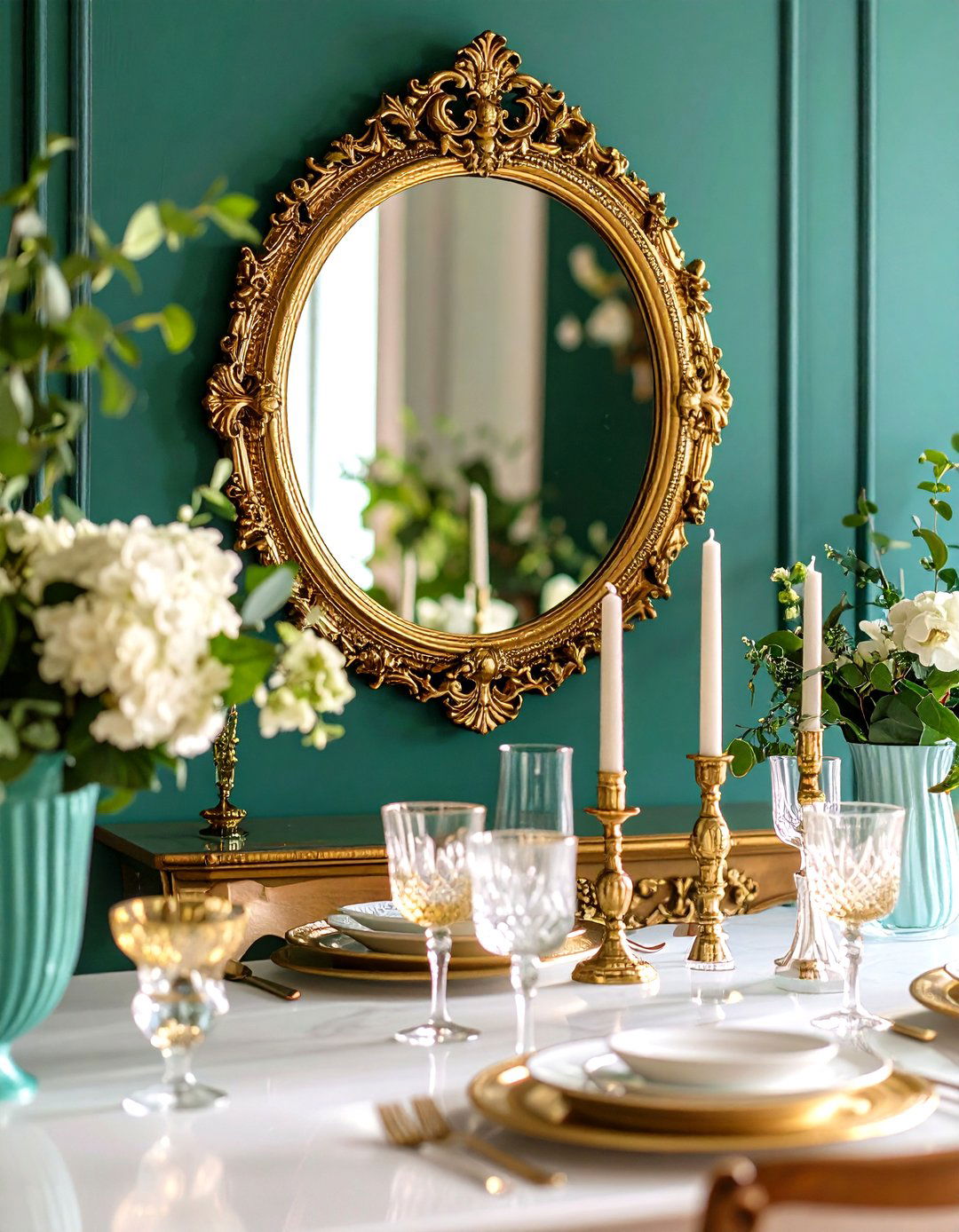
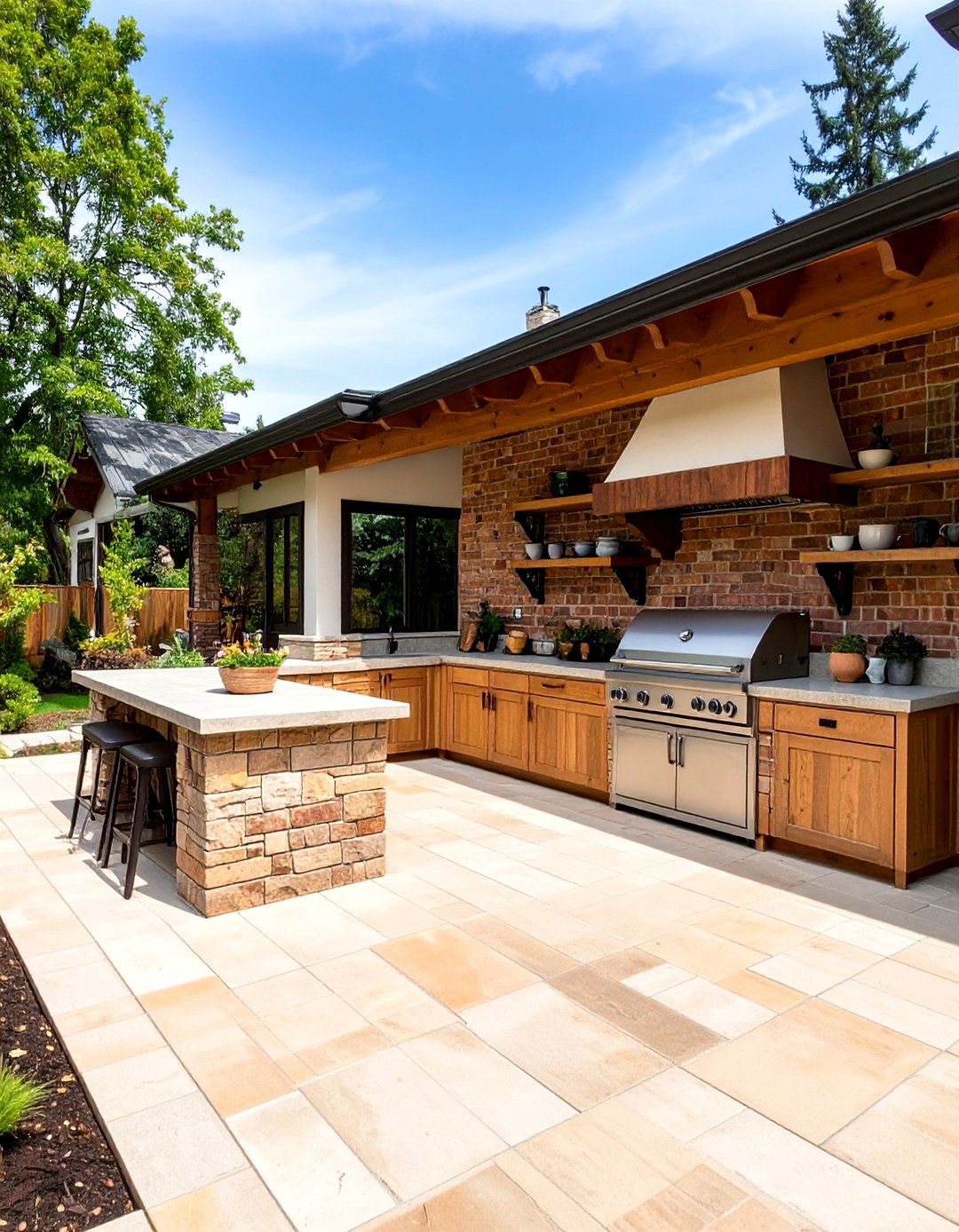

Leave a Reply